The Untold Stories of Drs. Powell & Fraser
The men behind some of the most devastating sets of experiments falsifying the germ "theory" of disease.
Sometimes when coming across information that one finds favorable, it is easy to accept it at face value without completely doing the due diligence of verifying the accuracy of the information for oneself. This is especially true when the information comes from a trusted source. Because a source has provided valid information in the past, this can be used as justification to simply go along with it and accept whatever information they present. We have all fallen for this intellectual laziness at one point in time or another. Knowing how easy it is to just accept information without verification is why I always try to make the case that people should never just trust anything 100%, even coming from myself or from any other source that they believe in. We should all be willing to put in the effort and do our own research in order to verify any information that we come across for ourselves.
Recently, I realized that I was guilty of engaging in such intellectual laziness when I published my article The Infectious Myth Busted Part 6: The Germ Duel earlier this year. In the article, I presented many examples of different researchers who experimented upon themselves with germs in order to demonstrate the fraud of the germ “theory” of disease. I framed the article with the story of Dr. John Bell Fraser, his experiments involving deliberate exposure to many “deadly” bacteria, and a subsequent germ duel that resulted from the newspaper articles detailing his work. As supporting evidence within the body of the article, I discussed similar experiments that were undertaken by Dr. Thomas Powell. Both of these men utilized germs associated with the same diseases, and both exposed themselves, their family, and volunteers to the bacteria with no ill effects falling upon any of those involved. Needless to say, this is compelling and powerful evidence that essentially falsified the germ “theory” of disease.
However, a few weeks ago, I was confronted in a Twitter exchange with a member over the experimental evidence that I provided in support of the claims made by the doctors. While this person resorted to some rather fallacious arguments relating to where the information came from, whether the two doctors actually existed, and the age of the evidence, there was one area where they made a valid point. In my article, all that I had provided were a few newspaper and magazine stories quoting the doctors and their work. As I did not have much in the way of independent confirmation that these experiments actually did occur as described by the doctors, I realized that there was some truth in this criticism levied at me and my article. When I originally came across information on the work of both Dr. Powell and Dr. Fraser, it was from the writings of Dr. Herbert Shelton in his 1939 book The Hygienic System (pages 220-222). To support Dr. Shelton's information, I had found a 1897 newspaper article detailing Dr. Powell's experiments as well as a research letter published by Dr. Fraser in The Canada Lancet in 1916. While the research letter published by Dr. Fraser lent a lot of credibility to his claims due to its very nature, the newspaper article for Dr. Powell left a lot to be desired. Why was I willing to simply take his word that the experiments happened on multiple occasions in front of numerous nameless physicians? Was it because of the faith that I had in Dr. Shelton, who lived during that time, that I was willing to accept this evidence without much effort to verify on my part that this information was valid? I was a bit frustrated in myself, not because I felt that this information was invalid and that these experiments did not actually take place as described, but in my laziness to present the information without going as far as I could to verify the stories for myself before fully accepting them.
Thus, in an effort to make up for my failing in this instance, I decided to put as much effort as I could in vetting the events surrounding Drs. Powell and Fraser, scouring the web for any further sources mentioning the two doctors and their experiments. It was a frustrating experience as what is freely available on the web does not amount to much, and the information was scattered over many disparate sources. In fact, it wasn't until I came across a “Report for Action” on the house once owned by Dr. Fraser that I was able to make much headway. Within the report, I found the titles to a few relevant newspaper articles, and upon a Google search, I found them located in the archives at Newspapers.com. As is often the case these days, the articles were behind a pay wall. Fortunately, there was an offer for a free week trial that I was able to take advantage of, and with their excellent search engine (I swear I'm not advertising for the site…it just has a great search engine), I was able to find plenty of articles on both Dr. Powell and Dr. Fraser. Along with the other pieces of information that I had already acquired, I was able to piece together enough of their stories to the point where I feel fully satisfied that these experiments have been properly vetted, and that any criticisms against their work can be effectively silenced.
This was a very rewarding investigation as one of my favorite things to do is to give back the voices to the researchers of the past who have been drowned out and buried by special interests. I want these stories to be documented and preserved for future generations so that we can all learn from the past and avoid making these same mistakes going forward. With that in mind, presented below is the result of my much more thorough investigation into these brave doctors and their monumental contribution to exposing the fraud of the germ “theory.” Hopefully, these stories will help inspire others to stand up for what they know to be true even when it seems that the “consensus” is against them.
Dr. Thomas Powell
Dr. Thomas Powell (Sep 21, 1837 - Aug 18, 1916) has the distinction of performing some of the most devastating experiments to the germ “theory” of disease when he demonstrated, over the course of a decade, the inability of germs to cause disease to himself as well as to his volunteers. He did so by ingesting and injecting the most “virulent” bacteria in various ways in front of prominent physicians, and then getting examined and shown to be free of disease. When I originally presented information about his work in my article The Infectious Myth Busted Part 6: The Germ Duel, I provided the entire text from Volume 25, Number 52 of the Los Angeles Herald printed on November 21st, 1897. This is how I described his work within my article:
Dr. Powell not only survived, but he never experienced any ill effects from the undertaking of his experiments. His results were considered conclusive as they were achieved in the presence of two well-known physicians who corroborated the findings. Dr. Powell stated that his experiments proved that germs are the result of, and not the cause of, disease and that they are beneficial to achieving and maintaining health. So convinced was he of his results, Dr. Powell also used family members and other volunteers in his experiments along with himself. He cultured the typhoid, diphtheria, and glanders bacteria to the point of there being no doubt about their “virulent nature,” and he experienced no ill effects beyond a sore arm from the injection. Dr. Powell stated that his greatest trial occurred in the presence of 25 physicians where he took both the typhoid and diphtheria bacteria into his system and, upon examination, it was determined that no ill effects had occurred. In order to ensure that there could be no doubters, Dr. Powell performed the same experiments on two patients who also experienced no ill effects. Dr. Powell was confident that the germ “theory” of disease was fraudulent and challenged anyone to bring forth the most “virulent” bacteria so that he could ingest them. The physicians who witnessed these results firsthand were dumbfounded.
The entire LAH article is reprinted here with highlights of the most relevant points.
DEADLY GERMS
How Dr. Thos. Powell Has Swallowed Them
BACILLI IN HIS SYSTEM
HE LAUGHS AT THE THEORY OF CONTAGION
Gives to the World the Story of His Ten Years’ Defiance of the Death-Dealing Bacilli
Men have done strange things and taken desperate chances in the interests of science, but none has been stranger or more desperate that the act ot Dr. Thomas Powell, a physician who about a year ago took up his residence in this city, and who has actually taken into his system during the past ten years the germs of the deadliest diseases, for the specific purpose of shattering the time-honored theories regarding the transmission of contagious complaints from one person to another. Incredible as it may seen, Dr. Powell has not only survived the desperate experiments that he has undertaken, but has never shown the slightest signs of any ill effects resulting from them. The evidence regarding the truth of his claim is conclusive. His own written statements are backed up by the testimony of well-known physicians in whose presence Dr. Powell has taken the germs into his system during experiments that he has been secretly making during the past ten years.
Dr. Powell has decided that the time has come for giving to the world the result of his experiments, which he claims have been a complete and unqualified success. Here is the doctor’s statement of the result of his defiance of the power of germs:
“Before going into the details of my experiments with the germs of virulent diseases. I want to preface my statements with the explanation that I do not declare the germs to be harmless in all cases. What I do say is that a person to whom the germs of a particular disease are likely to prove dangerous must have a predisposition towards that particular disease, such predisposition being either hereditory or acquired. Given a man or woman with no such predisposition, and I claim that the deadliest germs are powerless to harm them. They can enter the sick chamber without fear of contracting disease, or even do as I have done, take the living germ into their system and suffer no harm. My experiments have proved the truth of my theory. “I claim that disease germs are utterly incapable of successfully assailing the tissues of the living body; that they are the results and not the cause of disease; that they are not in the least inimical to the life or health of the body; that, on the contrary, it is their peculiar function to rescue the living organism, whether of man or beast, from impending injury or destruction. They accomplish this by bringing about the decomposition of that obstructing matter which constitutes predisposition to disease, and cause it to be passed out by tlie blood.
“For ten years I have worked on this theory, and the results achieved I now give to the world. I determined in the first place to experiment by inoculating, not an animal whose hold upon life is exceedingly feeble, as is that of the rabbit or guinea pig, but the human body. I made the experiments upon myself, then upon members of my own family, and lastly upon such patients as were within the range of safe experimentation. I inoculated myself with the most virulent typhoid bacilli obtainable, having first eradicated from my system any predisposing cause for the disease. The result was entirely satisfactory, no evil ensuing beyond the usual soreness as in vaccination. Then I took into my system the typhoid bacilli, and no typhoid fever making its appearance, I repeated the experiment with diphtheria germs, without the least perceptible effect.
“In order to make the experiments still more complete, I cultivated the germs of diphtheria and glanders until there could be no doubt of their virility and took them into my system in the presence of two reputable physicians. The outcome was (illegible) the same as before.
“Then I made the greatest trial of all. In the presence of twenty-five physicians I took, first, the bacilli of typhoid into the stomach enclosed in gelatine capsules; and, second, the bacilli of diphtheria by both the vaccination method and subcutaneous inoculation.
“Examinations were afterwards made by the physicians referred to of the pulse, the temperature and of the respiration, and it was unanimously declared that these inoculations produced no greater effect upon me than might have been expected from a like quantity of water.
“In order that there should be no possibility of doubting Thomases declaring that the experiments were successful only in my case and that I had in some way been made contagion-proof by nature, I singled out from among my patients two who appeared to be fit subjects for similar experimentation: and, with their consent, put them through the same course as I had undergone, with less virulent diseases. The outcome proved that my calculation were well founded, no evil resulting in their ease any more than in mine.
“I am progressing towards a climax in my opposition to the greatest delusion of the world’s history, which will consist of the most astounding and conclusive demonstration ever made in the establishment of a scientific proposition. So confident am I that the scientists of the world are at fault in their germ theories that I challenge anyone to bring to me the bacilli of any disease known to the medical profession, and I promise to take into my system, in the presence of any jury of physicians that may be selected, germs that have been cultivated into deadly activity by the usual processes. All I ask is that I may be given time to eradicate from my system any predisposition to the disease that the germ represents.”
The physicians in whose presence Dr. Powell has made the experiments have been completely dumfounded by the ease and facility with which he has uprooted medical landmarks and smashed the chilled-steel theories of science. While admitting that there is no room for doubting the truth of his statements, they are not willing to admit that the theories can be applied generally.
The matter is of so much importance, however, that they are arranging to have a great and convincing test made by Dr. Powell and anyone who is willing to submit to the same inoculation as he has done, in order to settle forever the great question of whether or not a supposedly contagious disease can be transmitted from one person to the other by the medium of germs. The whole world will await the outcome with interest.
DR. THOMAS POWELL
While Dr. Powell's write-up of his experiments in the paper is reasonable enough evidence to pique the curiosity of many, the results were only validated based upon his own words. From recent experience, I know that skeptics are not convinced that his words are authentic, and they had valid questions. Who were the two physicians that performed the experiments on Dr. Powell? Did these experiments actually occur in the presence of prominent physicians on multiple occasions, leaving them dumbfounded? Did the cultures actually contain the “deadly” bacteria? With these questions and more in mind, I set out to find independent verification that these experiments actually took place as described by the good doctor and that he had actually achieved what he had proudly proclaimed. My hope was to verify Dr. Powell's work and to see if I could validate his claims, but I was willing to let the evidence speak for itself. With this expanded search, I was able to find many stories printed throughout the month of December 1896 in various newspapers around the country that preceeded, and further corroborated, the information that was presented in the 1897 article. Thus, I am presenting a chronological series of articles and stories about Dr. Powell and his work here.
Los Angeles Herald December 5, 1896.
Starting with an early December article from the Los Angeles Herald, we find out that Dr. Powell stated that he knew how to keep the human body free of disease. It was noted that Dr. Powell had written largely for scientific journals on this subject and that he had tested his theories on himself. Due to his discoveries, Dr. Powell had entered an agreement with California capitalists where he would be paid $9000 for a one-third interest in the discovery. We also learn that he would be spearheading a sanitarium that would be erected in Los Angeles in order to further test his theories.
The information from the Los Angeles Herald was reported on as well in various other papers at the same time.
Indianapolis Journal, Indianapolis, Marion County, December 5, 1896.
San Francisco Call, Volume 81, Number 5, December 5, 1896.
New York Journal December 7, 1896.
A few days later, a story from the New York Journal provided information on Dr. Powell's background, lending him further credibility. We learn that he was a graduate of the New York Medical College and that he belonged to organizations such as the International Health Association, the American Association for the Advancement of Science, and the American Science Health Association. Dr. Powell stated that he not only discovered and understood the true cause of disease, but that he knew how to cure those diseases which were thought to be incurable such as Brights disease, diabetes, and nervous debility. He set up a proposal for prominent physicians to secure bacterial cultures of various germs associated as causes of disease that were to be introduced into his body. Dr. Powell also proposed to be subjected to extreme changes in temperature in order to throw out all doubt.
The article went on to provide statements from different eminent men within the profession who doubted the veracity of Dr. Powell's claims. The concerns were mostly related to the unconfirmed nature of the claims made and a lack of information about his work available at the time.
The Springfield Leader and Press December 9, 1896.
Two days later, a rather lengthy story appeared in The Springfield Leader and Press noting that Dr. Powell was formerly a Springfield resident. It was said that there had been much excitement over the announcement in the press, and that some physicians gave credence to the doctor while others accused him of fakery. About twelve years prior, Dr. Powell had moved to the area after graduating and worked as a watchmaker while continuing his scientific research. He eventually opened a sanitarium in the area, but he had short-lived success as there was a dispute with the city council over emptying the water in the bathtubs from his facility into the street, causing Dr. Powell to look elsewhere for work. During the proceeding twelve years, he worked to understand how strength and vitality is obtained so that he could ascertain the cause of weakness and how it led to disease. Upon understanding these laws of nature, Dr. Powell was confident that the most diseased states could be reversed. There was no special serum. It was entirely a physiological solution. In his confidence, Dr. Powell proposed further experiments upon himself and was headed to his new sanitarium in Los Angeles to put his theories into practice.
The San Francisco Call and Post December 9, 1896.
An article in the San Francisco Call and Post from the same day corroborated the earlier story and added that Dr. Powell had written a paper on his findings for the New York Medical Review. Unfortunately, I have been unable to locate that paper.
People's Pilot, Volume 6, Number 26, Rensselaer, Jasper County, December 17, 1896.
On the 17th of December, an article in the People's Pilot added some more information, stating that Dr. Powell had an excellent medical practice in Springfield and that he had acquired a small fortune from it. He became engrossed in his investigations, quitting his practice and spending his fortune working on his theory over the next 15 years.
Los Angeles Herald, Volume 26, Number 83, December 22, 1896.
Five days later, the Los Angeles Herald did a story on Dr. Powell’s proposed challenge, noting that he had sent out 600 invitations to which a dozen doctors met to hear him out. He set out to prove his claims before his profession and erase all accusations that he was a fraud. However, Dr. Powell would not attempt to provide explanations at the time as he was in the process of writing a book that stood to explain his discoveries, methods, and philosophy in detail. He wanted the truths to all be divulged at one time.
While Dr. Powell had asked for the doctors to bring forth any germs to challenge him with, they had mostly all failed to do so. Fortunately, Dr. J. B. Pilkington had brought cultures of tuberculosis, diphtheria, and typhoid fever, along with a sample from someone said to be reeking of tuberculosis. Dr. J. T. Scholl performed the first operation while Professor A. J. McClatchie, a respected bacteriologist, readied the rest. Dr. Scholl scarified the arm of Dr. Powell, rubbed the tuberculosis bacterium into it, and then sealed it with bandages. The same culture was then injected into a guinea pig.
The second experiment was performed by Professor McClatchie who injected a dose of diphtheria bacilli that was said to be enough to sicken a subject within 4 to 5 days into the right arm of Dr. Powell. He was to be exposed to more germs at a later time. Professor McClatchie kept the guinea pig for observation, and all of the men would reconvene to discuss the results.
Ann Arbor Democrat, December 25, 1896.
On Christmas day, the Ann Arbor Democrat reported on the experiments, noting that Professor McClatchie had examined the cultures to ensure that they were alive and active. It was said that tuberculosis, diphtheria, glanders, anthrax and typhoid fever were all tested, with leprosy and cholera to be tried later. Those in attendance were all amazed that Dr. Powell did not succumb to any disease, and it was ensured that no fraud could have been done as the operation was performed by a reputable physician.
San Francisco Chronicle December 25, 1896.
Dr. Powell was interviewed on the street as reported on by the San Francisco Chronicle, where he was quoted saying that he had swallowed germs as well as had them injected, all resulting in no ill effects. Dr. Powell offered to have his blood examined microscopically, but this was considered unnecessary by the physicians involved.
Los Angeles Herald, Volume 26, Number 109, January 17, 1897.
After the successful experiments performed before a live audience in December, the Los Angeles Herald reported in January that Dr. Powell had associated himself with Dr. Pilkington. He would be treating those with Brights disease, diabetes, tuberculosis, and rheumatism, and any physicians wishing to conduct interviews to investigate would be allowed to do so.
The Pacific Bee January 27, 1987.
At the end of January, The Pacific Bee reported that the guinea pig that had been injected with the same tuberculosis bacterium that had been injected into Dr. Powell had died. According to Professor McClatchie, who had administered the doses to both and had watched over the guinea pig since, the rodent had succumbed to all of the symptoms of tuberculosis. Dr. Powell, on the other hand, remained alive and well. The doctor was apparently unphased by the news, and was planning further experiments upon himself.
Columbia Missouri Herald February 5, 1897.
In February, the Columbia Missouri Herald reported that Dt. Powell had remained well since his exposure to a half dozen “contagious” disease germs. It was confirmed that the guinea pig injected with the same tuberculosis bacterium as Dr. Powell had since died.
The Lancaster Examiner September 25, 1897.
The Lancaster Examiner reported in late September of 1897 that Dr. Powell had written to the State Board of Health to have the necessary experiments performed upon himself with the germs of yellow fever in order to further demonstrate the fallacy of the germ “theory” of disease.
The Sioux City Journal December 2, 1897.
My hometown paper, The Sioux City Journal, reported a year later that Dr. Powell had been exposed to all kinds of germs and had remained healthy, astonishing the medical fraternity. Dr. Powell was quoted as saying that germs are not the cause of, but rather the result of, disease. They are beneficial organisms that remove obstructions. The article ends with a statement from Dr. W. A. Dalrymple who witnessed the experiments on Dr. Powell, reiterating that no illness befell him.
In 1900, Dr. Henry Raymond Rogers, M.D., wrote about Dr. Powell's results in the New England Medical Monthly and the Prescription, Volume 19. He discussed Dr. Powell's success over many experiments that were made in front of the medical profession with germs said to be of the deadliest character. The Dr. Powell section makes up only a brief portion of the paper, and as it is a really good read, I have presented the entirety of it here.
From these various sources, we can piece together that Dr. Powell was true to his word and that he was exposed on different occasions to various germs in multiple ways. No illness occurred at any point in time. We can also ascertain that the ultimate goal for Dr. Powell coming forward with his information and demonstrations was to acquire his own sanitarium to help treat those with disease. While the reports from 1896 and 1897 stated that a sanitarium was being made for Dr. Powell, we find out from Genealogy.com that it wasn't until 1904 that Dr. Powell founded and became President and Medical Director of the Powell Sanatorium, Inc. in Los Angeles, California. This can be verified by a few sources, such as within the American Medical Directory which listed Dr. Powell as the Physician in Charge.
Polk's Medical Register and Directory of North America listed Dr. Powell as the Medical Director of the sanitarium and confirmed that it was established in 1904.
They also listed the address as 313 W 3rd St in Los Angeles, CA.
This address can be corroborated by an ad published in The Los Angeles Times on December 25th, 1910.
We can thus conclude that Dr. Powell was ultimately successful in his demonstrations as well as in achieving his goals. We also know that he is honest, as in 1909, Dr. Powell released a 605-page book titled Fundamentals and Requirements of Health and Disease, thus staying true to his word that he would release all of his findings in his book. Over the course of three sections, he discussed the new vital philosophy, the new etiology and pathology, and the new prophylaxis and treatments. Dr. Powell also provided even more details on the experiments he had undertaken, noting that the bacteria were administered in many ways, including vaccination, ingestion, injections into the bowels, subcutaneous injections, hypodermic inoculation, and insufflation into the lungs:
“I have demonstrated on many occasions, in the presence of many physicians and by means of many experiments, the most legitimate that could well be devised, that whenever the body is free from pathogen it is able to withstand, not only those changes which are usually productive of “colds” but all kinds of infective organisms, the most virulent not excepted. The legitimacy of the experiments to which I refer is evinced by the fact that they were made upon the human body and consisted, on the one hand, in exposing it to sudden and severe changes of temperature, and, on the other, in the introduction into the body of the vilest germs known to bacteriology — namely, the bacillus anthracis — the germ of malignant pustule and blood-poisoning; the bacillus mallei — the germ of glanders; the bacillus typhi-abdominalis — the germ of typhoid fever; the bacillus diphtheriae — the germ of diphtheria, and the bacillus tuberculosus — the germ of pulmonary consumption, and tubercular diseases in general. These germs were introduced in various ways; first, by application to denuded surfaces, as in vaccination; second, by ingestion, or swallowing germ-laden “cultures”; third, by injecting germ-laden “cultures” into the bowels; fourth, by subcutaneous injection, or hypodermic inoculation; fifth, by insufflation — drawing into the lungs a powder made from carefully dessicated sputum of a patient who was dying of consumption, and which was heavily laden with tubercle bacilli, there being an average of twenty-five germs visible within the field of the microscope.
Experiments of this kind were made on six different occasions, and with no other precaution than that of seeing that the body was practically free of such evidences of the presence of pathogen as the existence of congestion and catarrhal transudation. In every experiment, except the first, the germs were furnished and their introduction was supervised by reputable physicians. On the last three occasions the experiments were made in the presence of about twenty-five physicians, who declared upon due investigation that not the slightest symptom of morbid action of any kind could be detected — that there was no change of temperature, no enlargement of the glands and no inflammatory action.”
Dr. Powell continued to speak out against the germ “theory” of disease writing a rather lengthy article on August 11th, 1912, for The Los Angeles Times providing even more details of his work. In the article, Dr. Powell lamented that false doctrines have been misguiding the population which had led to a decrease in health. Looking at data from over the last 50 years, he noted the increase in both “infectious” and “non-infectious,” curable and incurable diseases despite the efforts to stop this from occurring. Dr. Powell provided a condensed version of the findings published in his book. He also noted that he had previously written about his findings in 1894-95 in the journal Medical Brief (I could only find chapter 3, chapter 4, and chapter 5). Dr. Powell recounted how his original plan was to release all of his findings in a comprehensive medical work all at one time, but that he had discovered that his findings were reported on in early December 1896 before he was ready to unveil them. To ensure that he could silence any accusations of being a fraud, Dr. Powell retold how he had sent out over 600 invites to all of the medical professionals in Southern California. From December 21st to the 23rd, experiments were performed with 25 reputable physicians present each time. On all three occasions, Dr. Powell was subjected to germs of varying kinds, and each time it was decided that the effect was akin to water. Dr. Powell claimed that, over the years, he had put his theories to the test and had, with very few failures, been able to cure people of “incurable” diseases for good.
In the 1913 Western Edition Notables of the West, Vol. I, Pages 590-591, a detailed biography for Dr. Powell was presented. In it, he is described as distinguished for his original investigations and writings in the explanation of the activities of life. The feature pointed out that Dr. Powell graduated in 1858 from the New York Medical College of New York City—the first institution in the United States to establish a higher standard of medical education. In 1884, Dr. Powell sought further education from the Medical Department of the University of Nebraska in order to gain a better understanding of medical problems than he had been able to obtain from the medical literature of the period. While the school was good, it did not meet his expectations, leading Dr. Powell to intensify his efforts to solve the obviously unsolved problems of modern medicine. The results of a quarter-century of investigating led to the production of an entirely new and original medical philosophy, which he detailed in his 1909 book. The article goes on to confirm that, in 1896, Dr. Powell demonstrated on three separate occasions, through experiments made upon his own body, that he had discovered how to render the human body “immune” to “infective” organisms. These results were repeated in late 1896 as well. It is also said that, in 1900, Dr. Powell originated the Electro-Dynamic method of eradicating deep-seated disorders. The article stated that there is much in Dr. Powell’s theses that justified the conclusion that he had made an epoch-making discovery. In a May 1910 review of his book by The Medical World, the authors “unhesitatingly accord the attribute of honesty and enthusiasm to the author.” Thus, it can be ascertained from this article that Dr. Powell was greatly educated, well-respected, and entirely honest about his discoveries.
THOMAS POWELL, MD.
POWELL, THOMAS, Doctor of Medicine, Los Angeles, California, was born in Montgomery County, Tennessee, Sept. 21, 1837. He is the son of William Solomon Powell and Sallie (Holloway) Powell. He has been twice married, his first wife, Margaret Ianthe Rife, whom he married at her mother’s country home in Logan County, Kentucky, on December 18, 1859, having borne him eight children. They are Charles Thomas, Ianthe Florence, William Rife, Arthur Leon, Effie May, Nellie Caroline, George Fideles and Verne Q. Powell. His second wife, Clarissa Jeannette Pond, whom he married June 25, 1893, has borne him one child, Ruth Jeannette Powell.
Dr. Powell, who is distinguished for his original investigations and writings in explanation of the activities of life, normal and abnormal, attended the public and private schools of Montgomery County, Tenn., graduating later (1858) from the New York Medical College of New York City—the first institution in the United States to establish a higher standard of medical education, and hence the forerunner of the present system of medical education.
He entered upon his chosen career in the latter part of 1859, locating thirty miles northwest of his birthplace in a thickly populated country district, in Trigg County of Kentucky, where he still lived when the Civil War began. Nearly all of relatives were slave-holders, and yet he actively opposed the secession movement, and with the result of carrying his district in behalf of the Stars and Stripes in each of the three elections that were held with the view of taking his adopted State out of the Union. He was a member of the “Union League” of that perilous period, and took part in the enlistment of the men composing the regiment of Unionists organized at Hopkinsville, Ky., by Colonel Buckner of that city.
A short time after the Bowling Green convention took action, professing to add the south half of the State to the Confederacy and providing for a draft in the interest thereof, Dr. Powell and family, together with fifty-four of his fellow loyalists, seeing no other way of escaping service in a cause for which they had no sympathy, embarked on a United States gunboat for Paducah, Kentucky, arriving at that point soon after General Grant took command thereof. A few months later he yielded to the importunities of relatives residing in Indiana, locating in a thickly populated country district in Rush County, where he remained for many years. In 1878 he moved to Danville, Indiana, where he established what he believed to be the most up-to-date office of the period, embracing, as it did, not only the latest measures and apparatus then in vogue, but several steam-propelled therapeutic appliances of his own invention.
In 1884, when modern medicine was rapidly approaching the zenith of its world-wide regnancy, Dr. Powell determined to take a post-graduate course, and with the hope of meeting a long-felt want—a better understanding of medical problems than he had been able to obtain from the medical literature of the period—making choice of the then existing Medical Department of the University of Nebraska—an institution that appealed to him, by reason of the fact that all three of the then prevailing systems—Regular, Eclectic and Homeopathic—were embraced therein.
This institution was to all appearances well-manned and up-to-date in its equipment and teachings and yet it did not meet the expectations of Dr. Powell, as a medical student. Its teachings served, not to gratify, but to intensify Dr. Powell’s professional craving because even they did not supply the missing links of the current teaching. Wherefore, he set out with the determination to solve, if possible, both the confessedly and the obviously unsolved problems of Modern Medicine. The most important of the former class were those pertaining to the susceptibility of the body to morbific agencies, climatic, sporadic and bacteriologic. Authorities had gone no further than to realize and admit that both congestion and infection depend upon a pre-existing condition of which a lowered vitality is the most conspicuous feature.
To the newly fledged investigator, if to no other person, it appeared that the solution of this problem called for a knowledge of the agency to which a lowered vitality naturally refers—the power that lies at the bottom of the vital activities, evidencing its right to the distinction of being the law-giving principle by bearing the same relation to the activities of the vital realm that gravitation does to those of the physical universe.
In short, Dr. Powell has spent more than a quarter of a century in the attempt to detect and remedy the deficiencies of the current teaching, and with the result of the production of an entirely new and original medical philosophy, the details of which he published in 1909 in the shape of a medical work of 600 pages, entitled “Fundamentals and Requirements of Health and Disease.”
His first achievement was effected in 1885 and consisted in a most complete and logical solution to the problems of Nutrition and Muscular Contraction, negative the current teaching by showing: (1) that nutrition consists, not in the rebuilding of worn-out tissues, as authorities had asserted, but in the filling and refilling of the cells of which the motor mechanisms, nervous and muscular, are composed; (2) that the living machine owes its energies, mental, nervous thermal and propulsive, to the oxidation, not of its tissues, as authorities have declared, but at the carbon of the food stored in the cells thereof; (3) that it owes its every motion to the Vitomotive Power—the power of expanding carbon dioxide gas—the form of energy which is revolutionizing the world’s travel, and as Dr. Powell puts it “by sending the ‘Horseless Carriage’ in triumphal elegance along the highways of civilization.”
In the January, 1886, number of the Kansas City Medical Index, Dr. Powell published an illustrated article on this subject. In the winter of 1888, the light afforded by the foregoing discoveries enabled him to detect what he holds to be the great underlying cause of disease—the thing that renders the body “susceptible” to “colds” and infections; that gives rise to such troublous conditions as congestion, inflammation, and tissue starvation, and that caps the climax of its essential virulence by taking the shape of catarrhal matter, Milliary Tubercles and Cancer Cells. Because of its wondrous virulence and versatility this substance has been given the new and fairly distinctive name of Pathogen—a term that the discoverer thereof constructed from the Greek roots path—which means to suffer—and gen—which means to generate or produce.
In the winter of 1894-95, Dr. Powell published in the Medical Brief, of St. Louis, a series of six articles on the subject of his discoveries, entitled “Exact Science in Medicine—Its Necessity, Its Hindrances, and Its Basis,” the immediate effect being a flood of complimentary letters.
In the latter part of 1896 he demonstrated on three separate occasions, and by experiments made upon his own body, that he had discovered how to render the human body immune to infective organisms.
A little later (December, 1896) he was induced by parties who had heard of his discoveries to adopt Los Angeles, California, as the basis of his future operations. Soon after his arrival in Los Angeles he repeated the tests above referred to, demonstrating under the supervision of many physicians, and by experiments made, as before, upon his own body, that when a man has been freed from what he has found to be the basis and predisposing cause of disease—Pathogen—he is perfectly immune, the vilest germs then known to science—malignant pustule, tuberculosis, glanders, diphtheria and typhoid fever—having been introduced into his body by every available route, from ingestion to hypodermic inoculation, without producing the slightest discernible injury.
In 1900, Dr. Powell originated the Electro-Dynamic method of eradicating deep-seated disorders—comprehending a combination of agencies, mechanical and electrical, whereby the requisite remedies are forced from the surface of the body, where they must of necessity be applied, through the skin and into the deep-seated areas where the basic cause of the trouble—Pathogen—is embedded, as it is in a multitude of maladies, the result of a timely and duly faithful effort of the kind being the cure of a great variety of problematic disorders, including several of the so-called incurables—diabetes, Bright’s disease, dropsy, heart disease, apoplexy, paralysie (sic), nervous debility and locomotor ataxia.
There is much in Dr. Powell’s theses to justify the conclusion that he has made an epoch-making discovery—that he has obtained a definite knowledge both of the power that rules on vital plane, as gravitation does on the physical, and of the rules by which it is governed, the principia, it would seem, of the domain of Animated Nature.
The May, 1910, issue of “The Medical World” states:
“The first part of the book, or “The New Vital Philosophy,’ explains the movements of the living organism by showing that they are produced by the vito-motive power; that this agent has a dynamic equivalent of forty atmospheres; what this might power is; from what element of food it is developed; and how it sets the vital machinery in motion. Part two is entitled, ’The New Etiology and Pathology,’ and explains the various morbid processes, from congestion and inflammation to necrosis, carcinosis, and tuberculosis, by disclosing the remote and hitherto unsuspected cause thereof. Part three is entitled, ”The New Prophylaxis and Therapeusis.’ It discloses the measures, medicinal, electrical, mechanical, thermal, manual and regimenal, required for the elimination of pathogen.
. . . .The theory is novel, and opposed to anything heretofore accepted, and the book is very readable. We cannot venture any opinion as to how successful it may be in proselyting the profession, but we unhesitatingly accord the attribute of honesty and enthusiasm to the author. .”
Dr. Powell is a member of several social and scientific organizations, among which are the Masonic fraternity, the Celtic Club, American Pub. Health Association, American Health League, American Association for the Advancement of Science, American Association for the Study and Prevention of Infant Mortality, and the Southern California Academy of Sciences.
Los Angeles Herald, Volume XLII, Number 250, August 18, 1916.
By 1904, Dr. Powell had proven his claims through experimentation on himself, achieving his goal of opening a successful sanitarium in Los Angeles, and by 1909, he had succeeded in publishing his complete findings in his book. It seemed that the good doctor was finding plenty of fortune in the latter part of his life over the preceding twenty years. Sadly, it was not to last as, on August 18th, 1916, Dr. Powell collapsed dead at his home at the age of 79. The initial report in the Los Angeles Herald was that he had succumbed to sudden heart failure even though he was in good health and spirit the night before. The article stated that Dr. Powell was a noted physician who had written a number of medical books. His latest work, the aforementioned Fundamentals and Requirements of Health and Disease, was said to be of such importance to the world that the German government was considering introducing it in their universities. Dr. Powell was prominently discussed as a “Who's Who” of America.
Los Angeles Herald, Volume XLII, Number 251, August 19, 1916.
A day later, the Los Angeles Herald reported that the funeral of the “noted medical authority” was attended by many of the leading physicians of Los Angeles as well as by many prominent Masons, of which he was said to be high in the order, and by members of the Celtic Club, an organization that he founded and was president of at the time of his death.
The Los Angeles Times August 19, 1916.
That same day, the Los Angeles Times reported that Dr. Powell, the famed “germ-eater,” had died a victor in his battle over the germ “theory.” Rather than heart failure as reported by the Herald, the Times reported that his death was due to nervous failure brought upon by exhaustion from excess work. His family reported that he had been weakening over the past few months and became unable to work. The article recounted the experiments that Dr. Powell underwent, noting that he was given enough bacilli to wipe out an entire army corps, but that he had remained “immune” from all disease. Physicians subjected him to germs associated with yellow fever, bubonic plague, leprosy, lockjaw, rabies, glanders, and many others without any ill effect. They noted that he was watched with scientific care, and that guinea pigs subjected to the same bacteria died from disease while he remained healthy. Thus, in the end, the “germ-eater” stood tall.
Dr. John Bell Fraser
Dr. John Bell Fraser (Nov 16, 1855 - May 25, 1938), a member of the College of Physicians and Surgeons of Ontario, was a well-established physician who had been practicing in the Toronto area beginning in 1890. Before going into medical practice, Dr. Fraser was an agriculturist who kept detailed diaries of his work. However, he gave it all up in order to enter the Royal College of Physicians and Surgeons in Kingston, where he graduated with the degrees of an M.D. and a C.M (Doctor of Medicine and Master of Surgery). He received the same degrees from Trinity Medical College. In 1897, Dr. Fraser set up his medical practice at 685 Queen Street East, but he sold the place in 1906 after the death of his wife in 1902 led to his failing health due to overwork and exhaustion. After taking a trip to England in order to study and visit the medical facilities there, Dr. Fraser relocated to Sherbourne St., resuming his practice and eventually performing the experiments that would help to falsify the germ “theory.”
When I first reported on the experiments done by Dr. Fraser, the main source of information that I had was a snippet from Dr. Herbert Shelton’s 1939 book The Hygienic System which had reprinted a few sections from an article published by the Canadian doctor in the Physical Culture magazine from May 1919. Unfortunately, at the time, I was unable to locate and access the actual issue in order to get the full details. My search for the entire article turned up fruitless, and I figured that it was either lost to time, or at the very least, beyond my capabilities to find. I was only able to describe the few sections that Dr. Shelton had reprinted.
In his experiments, Dr. Fraser utilized millions of the highly “virulent” germs of diphtheria, pneumonia, typhoid, meningitis, and tuberculosis and fed them to volunteers in various ways. In all instances in over 150 experiments conducted over a 5-year period, no disease ever occurred in any of the volunteers.
Fortunately, in my recent attempt to further verify the claims made by Dr. Fraser, I happened to stumble upon a complete reprinting of the Physical Culture article on page 6 of the August 3rd, 1919, edition of The Sunday Times from Sydney, Australia. There was quite a bit more that was left out by Dr. Shelton which I am excited to share here. Beyond providing details of his experiments, Dr. Fraser discussed the different theories of disease causation that were believed in over the centuries, from demonic spirits to celestial events. He pointed out how whooping cough used to be treated by passing children under a donkey’s belly during a full moon. This was seen as an effective treatment as the cough would eventually vanish once the child recovered. Dr. Fraser spoke about the opposing theories of disease with the European-led germ “theory” and the Canadian/American-led bio-chemic theory. Whereas germ “theory” viewed the germ as the cause of disease, the bio-chemic theory viewed them as a result of the disease process rather than as a cause. He felt that these two diametrically opposed theories would come to a showdown in the 20th century.
Dr. Fraser then spoke of a group of citizens in 1914 who took it upon themselves to test whether germs could cause disease through ingesting them via the natural exposure route of food and drink. The first experiment involved 50,000 diphtheria bacilli consumed in water. When no ill effects were observed after the course of a few days, 150,000 more diphtheria bacilli were ingested in milk. The participants remained healthy once again, and so the third experiment utilized an estimated one million diphtheria bacilli which predictably caused no disease. The fourth experiment involved millions of diphtheria germs swabbed over the tonsils and soft pallets, under the tongue, and in the nostrils, and this continued to fail to produce disease.
As they were satisfied with the results from the experiments with diphtheria, more “disease-causing” germs were utilized, beginning with a series of tests using millions of pneumonia bacilli in milk, water, bread, potatoes, meat, etc. Again, no disease developed. Typhoid bacilli were attempted next, with special care taken to “infect” distilled water, natural milk (not pasteurized); bread, meat, fish, potatoes, etc., with millions of the most vigorous germs that could be incubated, and still no disease could be produced. They then moved on to another series of tests made with the meningitis bacilli. As these bacilli are believed to develop mainly in the mucous membranes of the nostrils, they took special pains to swab millions of the bacilli over the floor and sides of the nostrils, into the turbinated sinuses, over the tonsils, under the tongue, and into the back of the throat. In addition, millions of the bacilli were consumed in food and drink, and still no trace of the disease appeared. With the bacilli of tuberculosis, similar steps were carried out, however, more time was given in between the experiments in order to allow for the disease to develop. No disease occurred in the five years following the experiments.
Not content to rest on the results of these experiments, further attempts were made by combining different germs of different diseases, such as typhoid and pneumonia, meningitis and typhoid, pneumonia and diphtheria, etc., and still no evidence of disease followed. From 1914-1919, Dr. Fraser stated that over one hundred and fifty experiments were carried out carefully and scientifically, and yet absolutely no signs of disease ever followed. He then presented a list of twelve benefits that dropping the germ “theory” would allow for, which mainly spoke to a decrease in fear and disease, as well as an increased focus on studying the true chemical causes of disease while championing remedies such as proper nutrition, sanitation, and exercise. Dr. Fraser ended his article by proposing a challenge to the State Board of Health in the United States or the Provincial Board of Health in Canada, to carry out proper tests open to the public with typhoid, diphtheria, tuberculosis, meningitis, or pneumonia bacilli in the air, food, water, or milk.
Prior to his announcement in the Physical Culture magazine in May 1919, Dr. Fraser had actually published a letter in The Canada lancet: Vol. 49, no. 10 (June 1916) which, contrary to some of the criticisms levied against Dr. Fraser, is considered a scientific publication known as a research letter. These types of letters often contain data that is analyzed by authors that is either not enough for a full-length publication or the author does not have the time to write a full-length structured manuscript. In order for a letter to the editor of a scientific journal to be published, it would need to be vetted by the editorial board and shown that it adhered to the scientific standards of the journal in order to be deemed credible. In Dr. Fraser's letter, he described the ongoing experiments pertaining to ingesting diphtheria, typhoid, and pneumonia bacteria. As he stated later in 1919, at no time did any disease develop in himself or any of the subsequent volunteers. Dr. Fraser also pointed out that bacteria are never found when they should be, which is at the beginning of the disease process, and always follow after the disease has developed.
Following this publication, there were various articles printed throughout 1917 and 1918 discussing Dr. Fraser's findings. Most of these were reprints of the same report presented in The Stockton Evening and Sunday Record on October 11th, 1917. It was adapted from an article that Dr. Fraser published in The Open Door, a national anti-vivisectionist magazine. In the reprint, Dr. Fraser provided much of the same information that was presented in The Canada Lancet the year before.
Upon publishing his Physical Culture article in May 1919 that included his challenge to the US and Canadian health authorities to do the proper experiments, various newspapers ran stories describing Dr. Fraser’s findings throughout the following months. This was noticed by a Minnesota doctor who took issue with Dr. Frasers thoughts about the nature and treatment of germs. This disagreement would ultimately lead to a proposed “germ duel.”
The Toronto Star July 15, 1919.
Beginning in July, The Toronto Star provided more details as to who was actually involved in Dr. Fraser's experiments. It was revealed that Dr. Fraser was the first to consume the diphtheria bacilli, going from the use of 50,000 germs on up to millions of the germs. Two of Dr. Fraser's daughters, Miss Maude and Miss Bata, also participated in ingesting the “deadly” germs. Others were said to take part in these experiments as well, with 45 such tests done with the diphtheria bacilli alone. Afterwards, 50 similar tests were carried out with typhoid, 20 with pneumonia, another 20 with tuberculosis, and an untold number of tests with meningitis. It was also mentioned that Dr. Fraser performed experiments attempting to destroy the bacteria with sunlight and violet rays which ultimately failed.
The article mentioned the challenge to Dr. Fraser by Dr. H. W. Hill, the executive secretary of the Minnesota Public Health Association. This challenge was in response to Dr. Fraser's own challenge to the US and Canada health agencies in the Physical Culture article. If Dr. Hill's challenge was accepted, both men were to be exposed to bacterial cultures, with Dr. Hill relying on anti-toxins while Dr. Fraser would rely on natural remedies such as fresh air, sunlight, exercise, and proper nutrition.
The Daily Standard July 16, 1919.
The next day, The Daily Standard ran a story highlighting Dr. Fraser's experiments and the potential “germ duel” with Dr. Hill. As noted in the previous article, Dr. Hill's challenge was seemingly more interested in the remedies used to combat disease rather than whether the germs themselves actually cause disease. The rest of the article is a repeat of the information from the previous one.
The Gazette July 16, 1919.
That same day, The Gazette did a feature on the opposing voices rising up against Dr. Fraser. “Leading” Toronto physicians stated that Dr. Fraser was going against the “stone wall of scientific medicine.” Dr. Charles J. Hastings, a medical officer for Toronto, accused Dr. Fraser of being out for publicity. Dr. C. K. Clarke called his theories “distressing.” Dr. H. K. Detweiler stated that they are “too ridiculous to be noticed.” Interestingly, one unnamed doctor nearly agreed with Dr. Fraser, saying that while he wouldn't go quite as far as Dr. Fraser, the profession was “being influenced too much by faddists.”
The Hamilton Spectator July 17, 1919.
The following day, The Hamilton Spectator reported that, if the “germ duel” commenced and either Dr. Fraser or Dr. Hill died as a result, the other would be charged with murder, according to assistant prosecuting attorney Harry Peterson. This was an obvious attempt to shut down an event that would draw negative press towards the germ “theory” of disease. While Dr. Fraser had yet to respond to Dr. Hill's challenge, Dr. H. A. Zettel offered to participate in his place. However, it was said that Dr. Hill refused the offer.
The Windsor Star July 18, 1919.
A day later, The Windsor Star attempted pre-emptive damage control stating that, even if Dr. Fraser won the challenge, it would not prove him right and the germ “theory” wrong. This was the opinion of ex-mayor of Walkerville Dr. Charles W. Hoare and other boarder city doctors. Dr. Hoare brushed off any potential success by Dr. Fraser, stating that it would only prove that he has a “strong constitution” that has a “demoralizing effect” on the germs. Dr. George W. Orchard agreed with Dr. Fraser on the power of sanitary living conditions keeping one free of disease, but he felt that saying that once germs are introduced into the body that sanitation could prevent disease was a “wild theory.” Dr. James Gow wished that Dr. Fraser would keep to himself as he “would be a lot better off and the world just as well off.” Meanwhile, Dr. J.O. Reaume felt that the matter was not important enough to be interesting. The article goes on to say that others shared the same opinion, and that Dr. Fraser's results were not creating any excitement.
The Weekly British Whig July 21, 1919.
A few days later, The Weekly British Whig basically pleaded to local and state authorities to step in as no effort had been taken to stop the “germ duel.” In big bold capital letters, they cried that the affair is REGARDED AS RIDICULOUS. The article provides a few more details on Dr. Zettel's offer to step in for Dr. Fraser. Dr. Hill stated that he believed that the duel would not be illegal, but that they would need to obtain permission from the health authorities. Dr. Hill wanted either Dr. Fraser or Dr. Zettel to provide a legal document clearing any blame as well as make arrangements with their insurance companies. Dr. Zettel offered that, should one succumb during the challenge, the other should be the pallbearer at the funeral. If they both survive, a grand celebration should ensue. Dr. Clarke was quoted again discussing the duel as ridiculous.
New York Tribune August 3, 1919.
About two weeks later, the New York Tribune ran a story that filled in some more details on the duel. Sadly, the article was too big to fit to one image without losing the ability to read the fine print. It was also rather dark. I have divided the article as best I could and lightened the images in order to make it easier to read. What is added to the story is that Dr. Fraser was on vacation in the North Woods at the time that Dr. Hill challenged him, and this was the reason that there was no response. Dr. Zettel agreed with Dr. Fraser's position and wanted to save him the long trip to Minnesota, and so he offered to take the doctors place in the duel. Dr. Zettel agreed to Dr. Hill's proposal while also adding two suggestions. One was the aforementioned pallbearer clause, and the other was to tackle leprosy along with the other germs suggested. The health authorities caught wind of the duel and tried to stop it by threatening quarantine. However, both doctors had already agreed to do so after inoculation, and thus, the duel marched on. Then came the threat that they would be charged with murder if one participant succumbed after being inoculated by the other. This caused Dr. Hill to drop out of the duel for a bit, but he came back and proposed that they inoculate themselves, thus avoiding any potential murder charges. The authorities then agreed not to stop the matter.
However, after settling the legality matter, Dr. Hill began to be concerned over the ethics code of the duel, and as he had not received word from Dr. Fraser, he asked Dr. Zettel to wait for Dr. Fraser to drop out. While Dr. Hill challenged Dr. Fraser, it is noteworthy that he did not dispute the claims made by the Canadian doctor. According to Dr. Hill, it would take a month to get everything ready, and that they should each have their own two chosen doctors on hand as well as a fifth neutral doctor to ensure fairness. Thus, the stage was set for the “germ duel.”
The Ottawa Citizen August 30, 1919.
At the end of August, a column in The Ottawa Citizen examined the matter. The author found Dr. Fraser's position a “refreshing phase of medical heresy.” Dr. Fraser was wagering $1,000 for any physician who could demonstrate that germs cause disease. It was pointed out that Dr. Fraser had his share of supporters, such as Dr. E. DuVal who stated that there is “not one iota of proof that germs cause disease.” He further added that “modern scientific medicine is working on the assumption that germs cause disease, but the physicians are afraid to have it tested because it pays them to bask in the sunshine of a fool’s paradise.” The author noted that those who opposed Dr. Fraser lacked rational arguments, and that the medical profession, if it was certain of its position, should be willing to accept the challenge in order to silence Dr. Fraser. Yet instead, they chose to bludgeon him in the press to try and silence him. The examples previously discussed of the opposing voices paraded in the press against Dr. Fraser were highlighted, with the author pointing out the absurdity in some of the comments.
It was stated that Dr. Hill made numerous scathing remarks about Dr. Fraser in the Minnesota papers, thinking that the doctor’s position was a “bluff” that he was calling out. Dr. Zettel was willing to stand in for Dr. Fraser, who had, in turn, written to Dr. Zettel in July saying that he needed no stand-in, but if Dr. Zettel wished to do it, he could act as Dr. Fraser's “second.”
The Daily Standard September 6, 1919
A week later, The Daily Standard presented an article about Dr. Fraser, whom they claimed as one of their own as he was from the area. It was said that many friends in Kingston and District had been watching his long and distinguished career with much pride and interest. Dr. Fraser was strongly opposed to the forced quarantine of anyone healthy that were found to have “disease-causing” germs within them, even though there was no harm to their person. He stated that the act was “unworthy of a civilized country” and an “injurious fad.” It was mentioned that, along with being against quarantine, Dr. Fraser was also against water chlorination as this does not kill bacteria, which are not the cause of disease in the first place. Chemical poisoning in the water is to blame, and adding bleach to the water is just adding further chemical poison.
As noted in the above article, Dr. Fraser had published a pamphlet titled Flaying the Germ Theory. While I am unable to find this pamphlet, it was acknowledged in the 1918 Monthly Bulletin, Volume 14 by the California State Board of Health.
The Leader Telegram September 5, 1919.
On September 5th, The Leader Telegram reported that the “germ duel” was called off by Dr. Fraser as he refused to be injected with the germs via a hypodermic needle in an unnatural manner. As Dr. Hill stated that he had the right to choose the “duel weapon,” and Dr. Fraser refused that weapon, the duel was off. Dr. Hill then took an undeserved victory lap.
The Winona Daily News September 19, 1919.
Two weeks later, The Winona Daily News confirmed that the issue was related to the use of the hypodermic needle as the route of exposure. Dr. Fraser was willing to be exposed to germs naturally through air, food, or drink, but he refused to have them injected into his body. Dr. Hill refused to take on the challenge of natural exposure, providing the excuse that if every germ dose taken into the body by natural methods cause diseases, everyone would be ill. Ironically, Dr. Hill basically rephrased Dr. B.J. Palmers famous criticism of the Germ “theory” of disease:
“If the germ theory was true, there would be nobody left alive to believe in it."
Free Press Prairie Farmer September 24, 1919.
Near the end of September, the Free Press Praire Farmer provided one final confirmation that the “germ duel” was off. It stated that an agreement between the two parties could not be made. Dr. Hill wanted the two men to be injected with germs whereas Dr. Fraser wanted the “natural methods” of exposure through the air, food, and water. Somehow, it was seen by Dr. Hill as a crazy suggestion by Dr. Fraser that they should try and reflect the hypothesized exposure route (note sarcasm).
The Sault Star December 9, 1920.
With the “germ duel” settled, Dr. Fraser turned his attention to other matters of importance to him. The Sault Star reported on a disagreement over water chlorination, opening the article with an ad hominen attack against Dr. Fraser by Dr. N. Graham over the differences of opinion. Dr. Fraser had written to the city council expressing his concern that adding chlorine to the water supply made it unsafe, and he offered his services for free to prove that chlorination does not kill bacteria as they are “immune” to its effects. He noted that when an 800% decrease in chlorine levels in the water led to less typhoid attacks, this proved the fallacy of chlorination.
The Toronto Star July 5, 1921.
In July 1921, Dr. Fraser was elected Vice-President of the Canadian Anti-Vivisection Society, a group opposed to the cruel and inhumane experimentation of animals by way of “science.”
The Toronto Star February 16, 1924.
As the grotesque torture of animals in the name of “medical science” was a major issue for Dr. Fraser, he would regularly speak out, giving a lecture in 1924 titled “Have Experiments on Animals Helped or Hindered Medical Progress?”
The Toronto Star January 2, 1926.
Dr. Fraser participated in the Labor Party Forum where he gave a presentation on “The Germ Theory vs. Chemical Theory of Disease,” and held a discussion where he answered questions.
The Toronto Star October 20, 1926.
Also in 1926, Dr. Fraser made the long trip from Ontario, Canada to Philadelphia, Pennsylvania to represent the Canadian societies at the International Anti-Vivisection Congress.
The Montreal Star March 15, 1927.
Dr. Fraser participated, along with other prominent citizens, in a meeting to protest civic authorities handing over stray dogs to medical schools for study and experiments.
The Ottawa Citizen December 3, 1927.
Dr. Fraser was involved in the Anti-Vaccination and Medical Liberty League where he argued that all officers should be dismissed from enforcing compulsory vaccination, and that the Ontario Vaccination Act of 1914 was a blunder that needed to be repealed.
The Montreal Star August 13, 1928.
Dr. Fraser was also involved in the Astronomical Society of Canada and advocated that, along with the forecast, newspapers should publish advice for how people can protect themselves from the adverse effects of the predicted weather.
The Vancouver Sun July 11, 1931.
While he was concerned about the welfare of animals, Dr. Fraser was equally concerned about that of the children as well. In 1931, he spoke out against experiments on children, especially without the informed consent of the parents. He noted that, during the thousands of experiments performed on animals over the latter part of the last century to support the germ “theory,” it had been realized that the conclusions drawn were of little value. Thus, physicians were demanding the right to experiment on sick children in the hospitals.
The Toronto Star May 26, 1938.
Dr. Fraser's crusade against the germ “theory” of disease and everything that went along with it in the form of unethical experiments on animals and children, forced vaccination, water poisoning, etc., came to an end May 25th, 1938, at the age of 82 (wrongly stated as 84 in the heading and then 83 in the article). The obituary listed that Dr. Fraser obtained his medical degrees from the prestigious Queen's University as well as Trinity college, with post-graduate work done in England, and that he was a member of many medical societies. For anyone who tries to use a genetic fallacy against his work, Dr. Fraser had the educational credentials to back himself up.
The Toronto Star May 28, 1938.
Dr. Fraser was laid to rest on May 28th, 1938. The Toronto Star described him as a “beloved physician” who was an “old-fashioned faithful family physician.” Close friend Rev. Burns, who eulogized Dr. Fraser, stated that he differed frequently with members of his own profession, but that these differences were genuine.
Almost a year after his death, a final article by Dr. Fraser was published in the March 8th, 1939 issue of Consolation Magazine. The doctor’s final words on the subject pack a punch. Dr. Fraser noted that bacteriology, which the germ “theorists” cling to, emerged about the year 1880, which made it “in age only an infant, with an infant's vagaries and illusions.” He argued that analytical chemistry, which the biochemic theorist adhered to, was an exact science that had been around for centuries. He pointed out that germ “theory” hinged entirely upon the presence of germs associated with disease (i.e. correlation equaling causation) as well as the creation of experimental disease following the hypodermic injection of germs beneath the skin of small animals. When pressing germ “theorists” to explain how injecting germs into animals via hypodermic needles in any way relates to the hypothesized natural route of “infection” in humans through food and drink, he said that they admit that there is no relation. Germ “theorists” can also not explain when the germs first appear, and they provide unsatisfactory answers regarding why the bacteria are found within those who are healthy. Dr. Fraser stated that there are “no positive proofs given, that germs, if taken in food or drink, are harmful.” It was merely an assumption that, because a germ is found in association with disease, it is the cause, and it is also an assumption that inhaling or ingesting germs will cause illness simply because illness can ensue in animals that are unnaturally injected with them. He called these assumptions a “foundation of sand.”
Dr. Fraser looked at the question of whether bacteria appear before or after the onset of disease. While he said it was difficult as the timing of seeing a patient is often too late, “a long, careful study of early cases, especially in pneumonia, typhoid, and diphtheria, where the appearance of the germs is often delayed, showed that the germ followed the onset of disease, and consequently could not be the cause of it.” He stated that “there is a mass of evidence that cannot be broken down that the germs are the product and not the cause of disease,” which destroyed the germ “theorist” arguments with facts that they could not deny. These facts consisted of the many experiments that Dr. Fraser and his volunteers had made ingesting and exposing themselves via natural methods to supposedly “deadly” bacteria that all failed to produce disease. Dr. Fraser then discussed how many diseases have a chemical and not a bacterial origin, providing various examples to back up his point. He proclaimed that it is the violation of chemical laws that causes most of our intestinal diseases.
Dr. Fraser concluded by summing up the key facts against the germ “theory” of disease: that germs follow the onset of disease, that many diseases have a chemical origin, and that germs may be inhaled or ingested without harm. He noted that the poisoning of the water with chlorination, the forbidding of the sale of natural milk, and the quarantines of healthy people were all harmful beliefs held by the germ “theorist.” Dr. Fraser's last words on the subject was a scathing review of the logically fallacious thinking on the part of the germ “theorist,” and it was a powerful call to action for those who dared to think critically and logically.
The Germ Theory of Disease
WHEN the Germ theorist asserts that Pneumonia, tuberculosis, diphtheria, typhoid fever and meningitis are caused by germs, and the Biochemic theorist declares that germs have nothing to do with the causation of the above-named diseases, then it is time for citizens to examine the foundation of each theory, and support the one which appeals more strongly to their hard, common sense.
The study and classification of germs belong to the science of bacteriology, and as this science was placed on a practical basis only about the year 1880, it is in age only an infant, with an infant's vagaries and illusions. Analytical chemistry is a more exact science than bacteriology; its history extends over centuries.
The two main points upon which the germ theory is founded are: (1) the presence of different germs with different diseases; (2) that disease follows the hypodermic injection of germs beneath the skin of small animals. (Some tests have been made on humans, but the result was not conclusive.)
If you ask when germs first appear no answer is given.
If you ask the Germ theorist to point out the relation between injecting germs into small animals and giving humans the same germs in food or drink, they have to admit that these arc two distinct procedures with practically no relationship.
If you ask why thousands of men carry germs without injury to themselves the replies vary, but all are unsatisfactory.
If you examine the standard works on bacteriology you find no positive proofs given, that germs, if taken in food or drink, are harmful.
If you point out the cruelties inflicted upon dumb animals during their experiments the reply is that the end justifies the means.
The assumptions that because germs are found with disease they are the cause of it, and that if injected germs will cause disease, inhaled or ingested germs will do the same, is surely a "foundation of sand."
The first point for the Biochemic theorists to decide was whether the germs appeared before or after the onset of the disease. This was a rather difficult task, as our professional bacteriologists are not called until after the attending physician sees the case, and the latter is not called until after the disease shows itself, when it is usually too late to make a fair test: but a long, careful study of early cases, especially in pneumonia, typhoid, and diphtheria, where the appearance of the germs is often delayed, showed that the germ followed the onset of disease, and consequently could not be the cause of it. My own observations covered a period of over three years. Many other careful observers have investigated this point, and today there is a mass of evidence that cannot be broken down that the germs are the product and not the cause of disease.
As the Germ theorists strongly opposed this pivotal point — claiming that the germs were present but undiscovered — their argument was met by destroying all uncertainty and dealing with solid facts they could not deny.
Bearing in mind that germs are the products of disease, and thus harmless, the Biochemic theorists carried out the following experiments:
Typhoid Germs. In testing typhoid germs, forty-five experiments were made in which water, milk, bread, cheese, meat, fish, potatoes, headcheese, butter, porridge, etc., were infected with millions of fresh, vigorous typhoid germs; this food containing the germs was used in the ordinary way; and, as the Biochemics expected, there was not a single instance of any sign of typhoid. Here we have forty-five facts— not assumptions — to build on.
Pneumonia Germs. In this series of nineteen experiments, milk, water and food were infected with millions of pneumonia germs, and although no precautions were taken to prevent the disease, no sign of the disease developed.
Diphtheria Germs. A total of forty experiments were made with germs of diphtheria, in which not only were they taken in water, milk, bread, porridge, potatoes, cheese, butter, etc., but other millions of germs were swabbed in the nose and throat, and every facility given them to develop, but in spite of all efforts they refused to develop, although they would grow rapidly on nutrient agar. These tests were made scientifically, and part of the germs were grown from stock tubes furnished by one of the best known laboratories in North America. These are facts, not opinions.
Tuberculosis Germs. In this series of tests nineteen experiments were made; special attention was paid to thoroughly infecting milk, water, bread, meat, potatoes, etc., with millions of germs, fresh and vigorous, but in spite of every effort to get them to develop they were positively inert. The germs used were human (not bovine) tubercle bacilli germs.
Meningitis Germs. As these are the dreaded germs supposed by some to cause infantile paralysis, and believed to germinate in the nasal mucous membrane, special pains were taken to infect the nostrils and throat with fresh colonies of germs; they were swept over the turbinated bones, pushed into sinuses, swabbed over the floor of the nostrils, rubbed on the tonsils, placed beneath the tongue, taken in milk, water or food; but in spite of coaxing, coddling and urging, they refused to produce a solitary sign of meningitis in the eleven tests made.
Ten experiments were made with mixed germs, viz., typhoid and pneumonia, typhoid and tuberculosis, diphtheria and meningitis, typhoid and meningitis, diphtheria and pneumonia, etc., but. all failed to produce any effect.
Chemical Causes of Disease
The experience of ages has shown that many diseases have a chemical (not bacterial) origin; as example, tainted fish, meat or oysters contain a chemical poison that will cause typhoid; the inhalation of chlorine or bromine gas will cause bronchitis and pneumonia — the latter may also be caused by the chemical effect of exposure to cold; sunstroke, by the chemical effect of heat; lead poisoning, by working in lead; stone-cutters or miners phthisis, by the inhalation of coal or mineral particles; Rhus poisoning, by coming in contact with poison ivy, cirrhosis of the liver, through abuse of alcoholic liquors; etoile, from eating green apples or unsuitable food: in fact, it is the violation of chemical laws that causes most of our intestinal diseases.
Summary of Facts
1. That germs follow the onset of disease.
2. That many diseases have a chemical origin.
3. That germs may be inhaled or ingested without harm.
Truly a rock foundation.
From the Germ theorist viewpoint it is permissible to dump barrels of an irritant poison (bleaching powder) into drinking water; from the Biochemic theorist viewpoint that act is maniacal.
From the Germ theorist viewpoint it is reasonable to forbid milkmen to sell or deliver natural milk; from the Biochemic theorist viewpoint that act is criminal.
From the Germ theorist viewpoint it is advisable to quarantine citizens if found carrying certain germs; from the Biochemic theorist viewpoint it is an unwarranted robbery of our citizens' liberty.
Many believe that chlorination protects from typhoid; but the facts that Toronto, with chlorinated water, has an average death rate from typhoid twice that of London, England, with natural water, and that in 1916 we had three times as many deaths from typhoid as in 1915, show their mistake.
Again, while chlorination does not save us from typhoid, being an irritant to the mucous membrane, it favors nephritis and Bright's disease. Toronto's record is suggestive: In 1912 Toronto lost 164 citizens from nephritis (inflammation of kidneys) and Bright's disease; during 1913-1914 the deaths increased, and in 1915 Toronto lost 218 persons from these diseases — an increase of over thirty percent.
Many citizens believe that half-cooked, pasteurized milk is safe, but the facts that Toronto's infantile death rate is twenty-nine percent higher than in London, England, and twice as great as in rural Ontario (both of the latter using natural milk); that the death rate in Toronto Sick Children's Hospital, in the Infant's Home on St. Mary street, and in the R. C. Infant's Home on Power street, increased when they stopped using natural milk, all show clearly that the insane desire to tamper with normal milk has cost Toronto many infantile lives.
Again, when citizens of whatever country realize that they may be quarantined simply because they unknowingly carry some harmless germs, and thousands do so, it is time for them to organize and fight for their personal rights. It is a battle between principles; a fight between later scientific facts and past theories; a question that must be fought out.
The Biochemic theory appeals to humane persons; for, where thousands of small animals have suffered death through Germ theorists' experiments, the experiments here mentioned cost neither life nor health to man or animal. . . . — John B. Fraser, M.D., CM.
After a much more in-depth investigation, it should be clear that Dr. Thomas Powell and Dr. John Bell Fraser are owed an enormous debt of gratitude for their brave self-experimentation that stuck a dagger deep into the heart of the germ hypothesis. These men were both well-respected physicians that had much to lose by going against the popular rising dogma of the time. They were both at the forefront of the birth of the germ “theory” of disease and had an up close view of the logically fallacious case presented in its favor. Fortunately, the doctors were able to see the lack of actual scientific investigation and evidence supporting the proposed hypothesis. They understood how the body worked, and proved there is no truth to the claim that the ingestion and/or inhalation of germs of any kind results in disease. The experiments conducted by both men on themselves, using the same germs linked to the same deadly diseases, confirm and corroborate each other's work. In doing so, they proved that the germs are a result of, rather than the cause of, disease.
While the evidence in this article should be enough to quiet any doubters who are intellectually honest enough, there will still be those who continue to resort to fallacious arguments trying to discredit the results of these courageous men. The genetic fallacy, where one rejects or accepts an argument on the basis of its origin rather than its content, will be utilized as it was in the past, either attacking their medical backgrounds, the content of their character, or the source of the information. However, the evidence presented here should silence any claims that these men were not qualified or well-respected within their professional communities. Various credible sources were shared corroborating their credentials as well as the evidence presented. There is absolutely no evidence that either men committed fraud of any sort. Thus, this fallacy should be thoroughly delt with.
Another argument involves complaining about the age of the experiments and information, claiming that this somehow invalidates the evidence presented. This is known as the chronological snobbery fallacy, which is “the presumption, fueled by the modern conception of progress, that all thinking, all art, and all science of an earlier time are inherently inferior, indeed childlike or even imbecilic, compared to that of the present.” Obviously, this is fallacious as the age of a study or information does not necessarily impact its accuracy or validity. For example, the foundational experiments in physics or chemistry often remain valid despite their age. If one dismisses them due to age, entire scientific fields fall apart. This type of thinking is biased in the belief that newer is ultimately better, which leads to a prejudiced dismissal of older work without understanding its relevance and importance. An example that was used in this case involved arguing that the research letter published by Dr. Fraser in The Canada Lancet was invalid as it was not peer-reviewed. However, this is a dismissal without considering its content or the context in which it was conducted. Peer review, an admittedly broken and corrupted system, was not even around at the time, and it hadn't even begun being implemented as a standard until the late 1940s. In fact, The Lancet didn't even adopt a peer review system until 1976. If information that is not peer-reviewed is now invalid, then all of the foundational evidence supporting germ “theory” and virology would also be invalid.
Regardless of the fallacious arguments that will find their way irrespective of the evidence refuting them, the experimental results presented by Drs. Powell and Fraser are really just icing on the proverbial cake, serving as extra evidence falsifying the germ hypothesis. While it is definitely nice to have this on our side, it is not necessary for those of us criticizing the unproven “theory” to have to present evidence proving our case. The onus is on the germ “theorists” to present the necessary scientific evidence supporting their positive claims. At no point has anyone defending the germ “theory” of disease ever presented a shred of scientific evidence showing that natural exposure through the ingestion or inhalation of pure cultures of bacteria actually results in disease. The studies presented either show cruel and unnatural injection into animals in various ways, or illogically use some form of prophylactic vaccines or medicines beforehand to claim that exposure did not result in the disease when the same result would have occurred without their use. Thus, taking a cue from Dr. Fraser, the challenge goes out to anyone defending the germ “theory” to present experimental evidence where researchers exposed either themselves and/or other human volunteers naturally through inhalation and ingestion to pure cultures of the bacteria associated with diphtheria, pneumonia, anthrax, tuberculosis, meningitis, etc., and how they came down with the diseases in question. Show us the evidence that refutes Dr's. Powell and Fraser. Until you are able to do so, the two heroic doctors will stand victorious: unchallenged, unblemished, and unrefuted by the germ “theorists.”
partnered with the Health Freedom Defense Fund to produce a video exposing the Spanish flu fraud.The Baileys also provided another entertaining round of Q&A's.
has another helpful serving of Freedom of Information Requests, this time in regard to H5N1 “bird flu.” examined what happens when one challenges their beliefs. has a few excellent pieces on the vaccination scam.
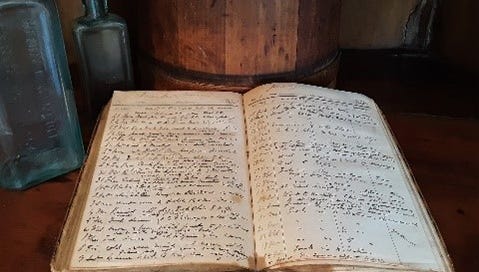



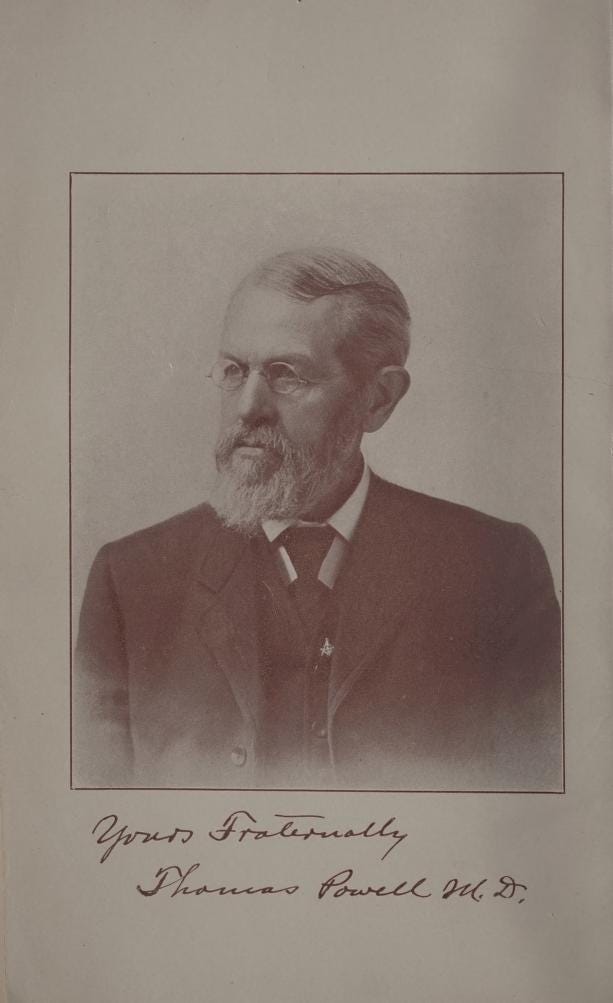
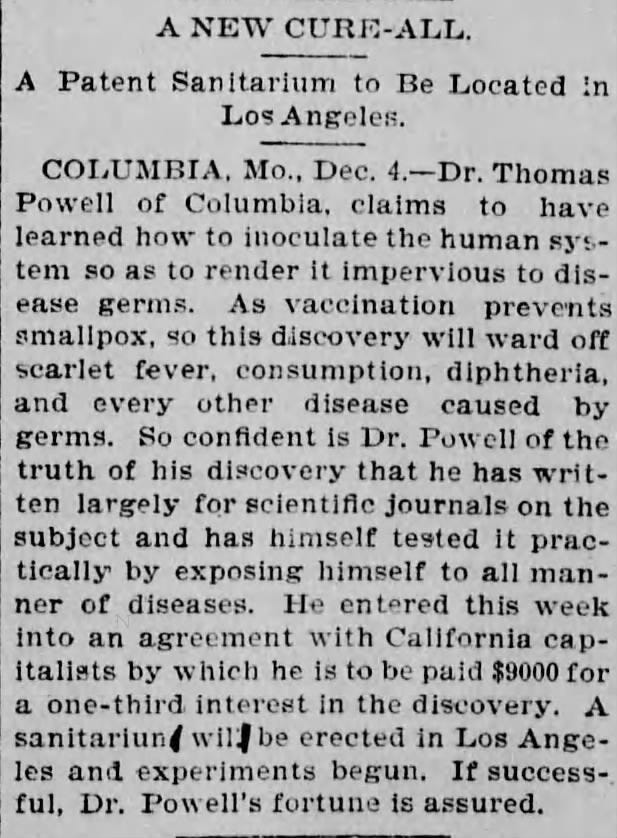
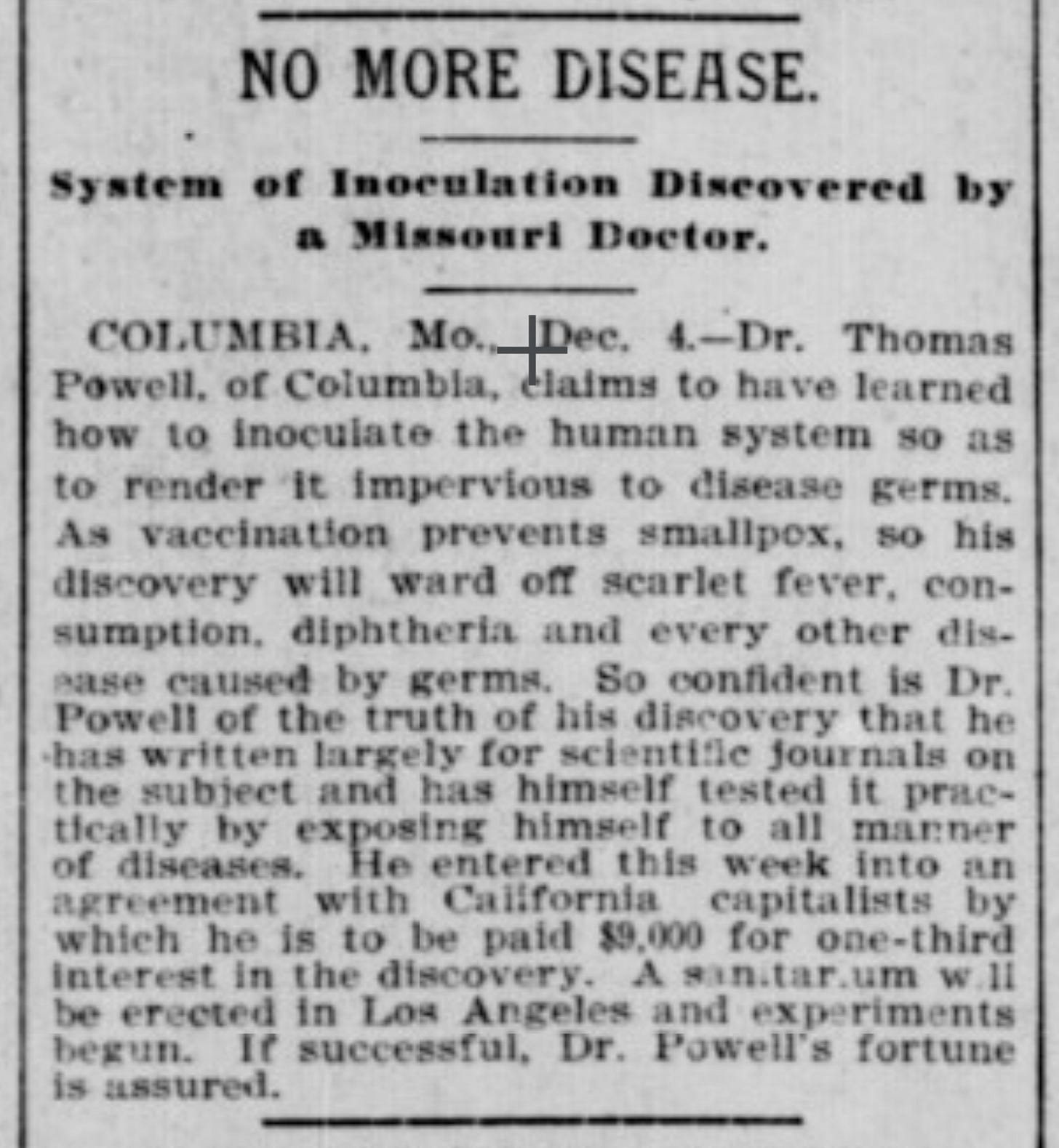
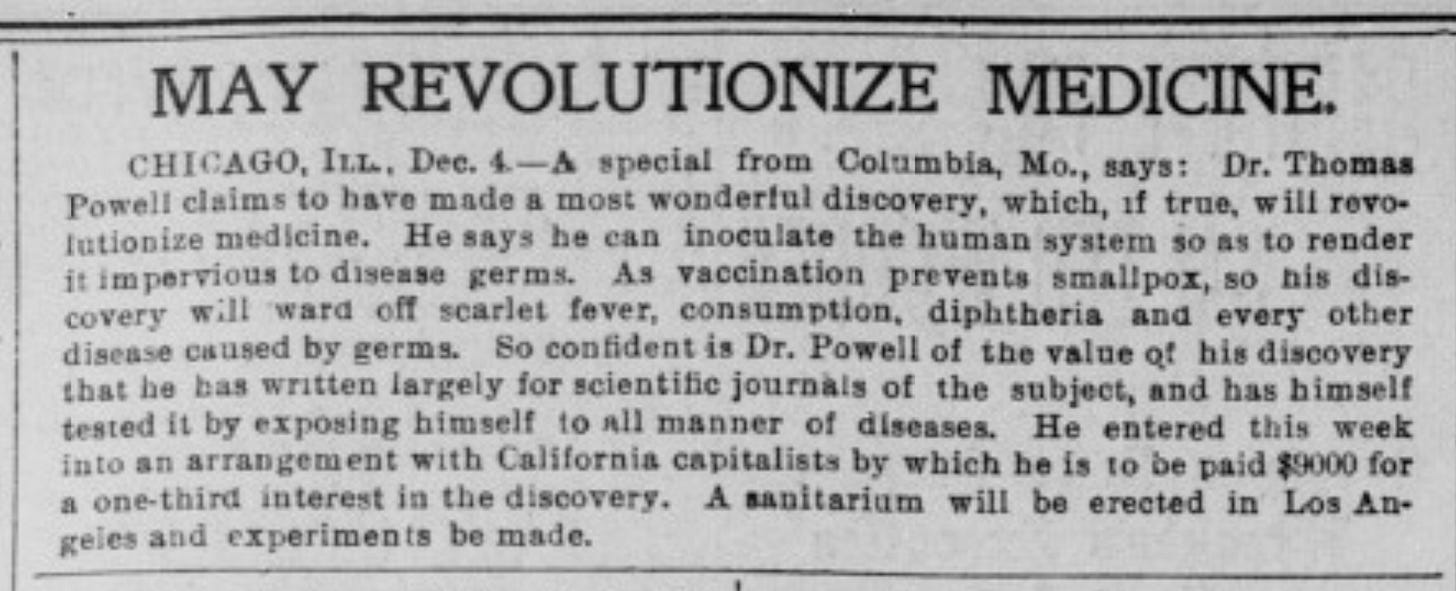


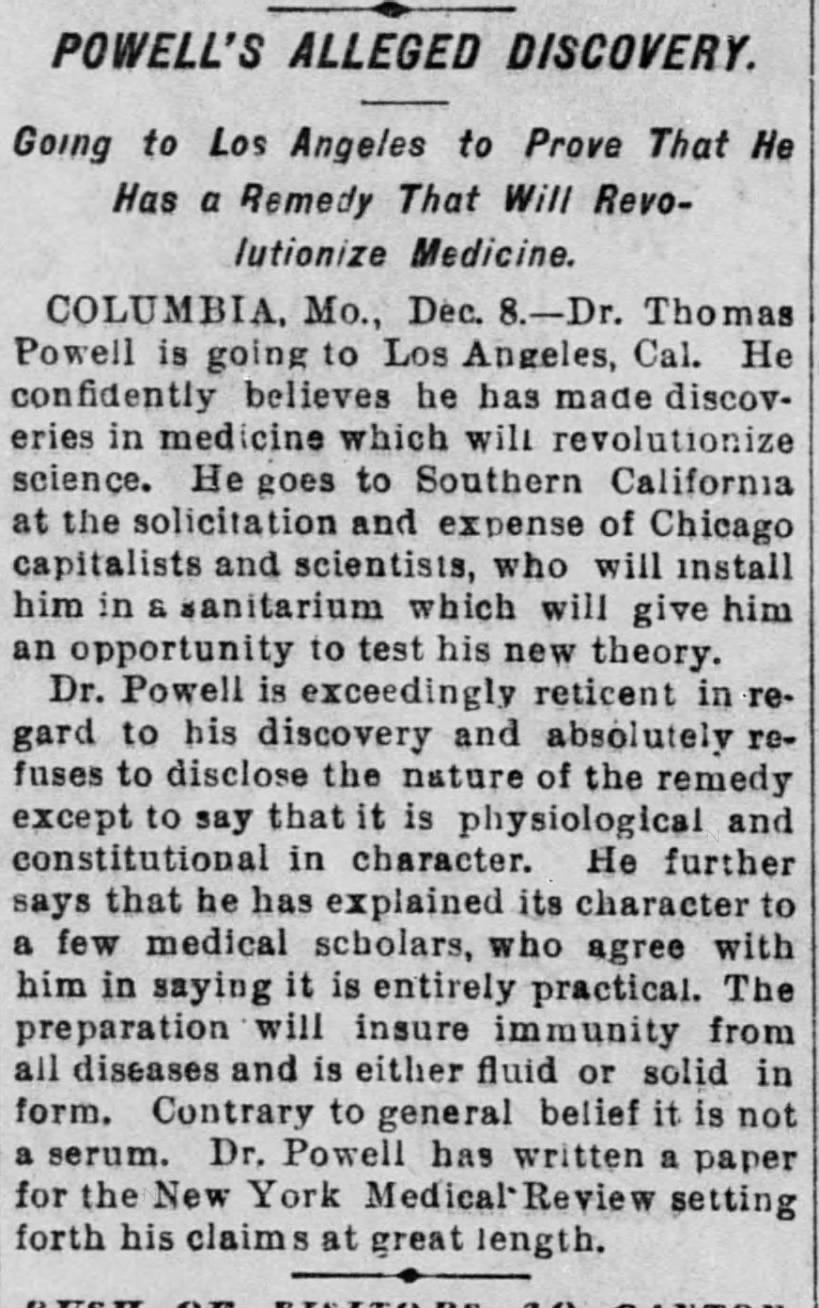



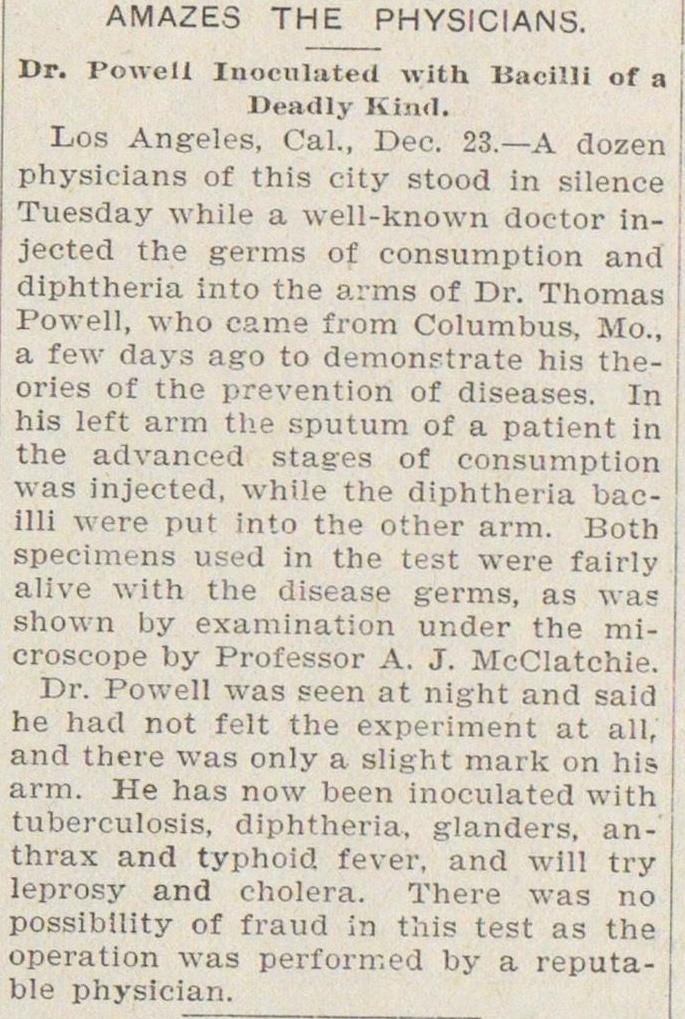
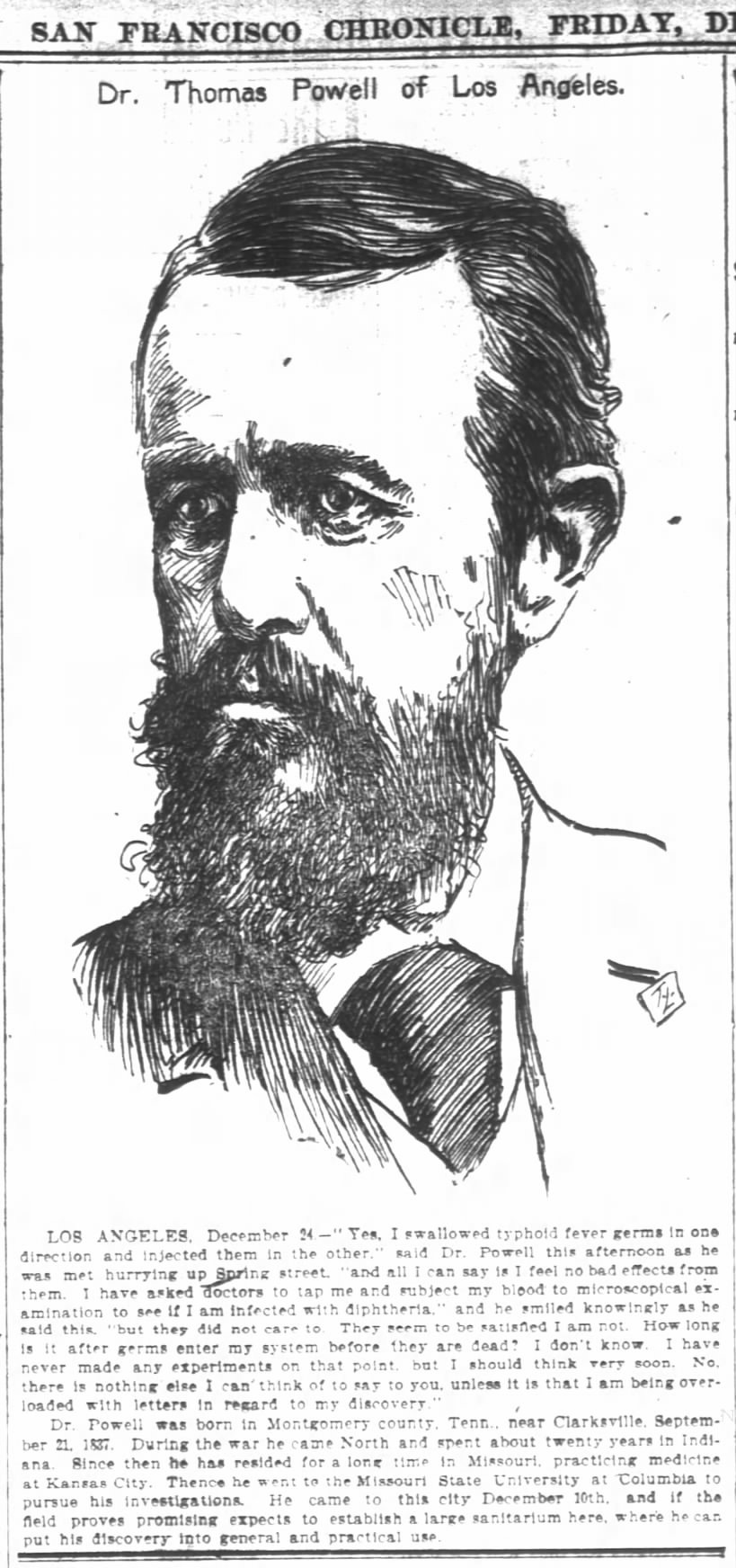


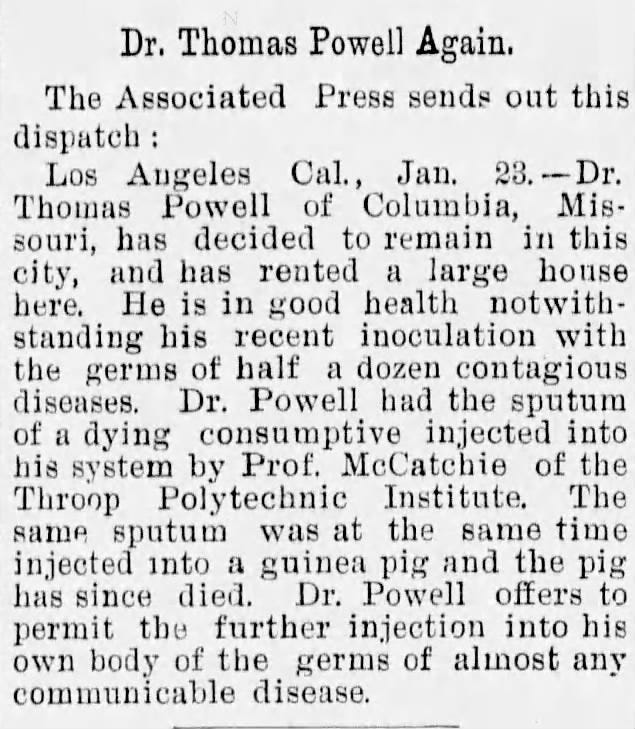
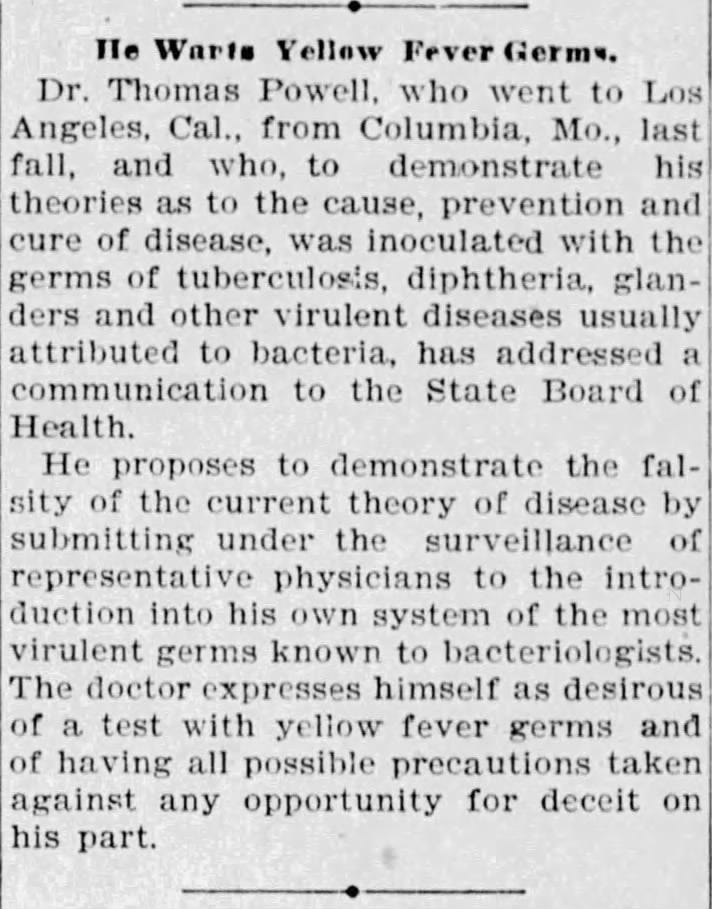
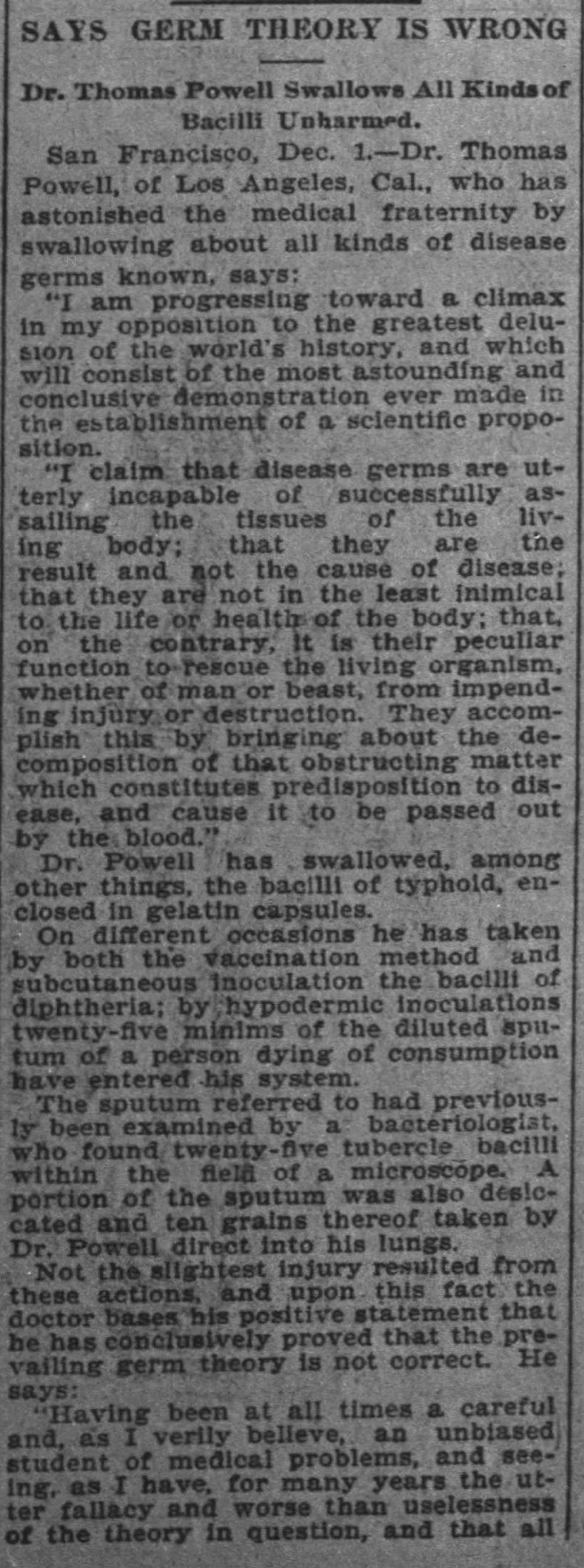
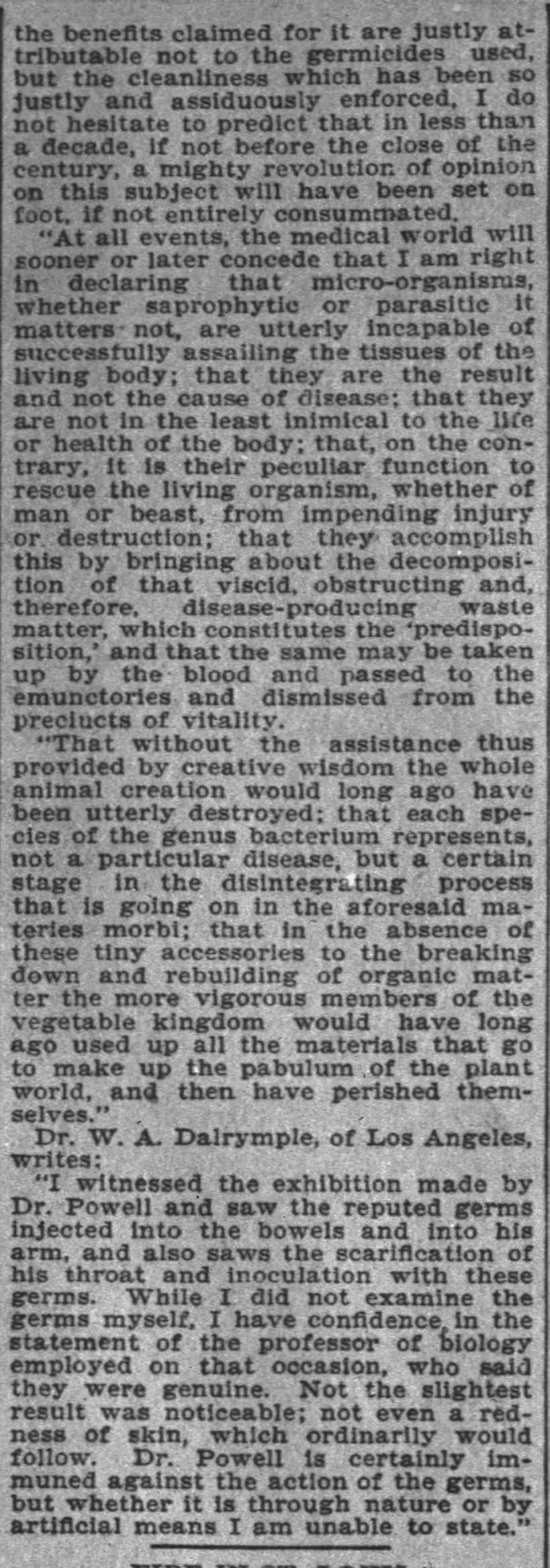
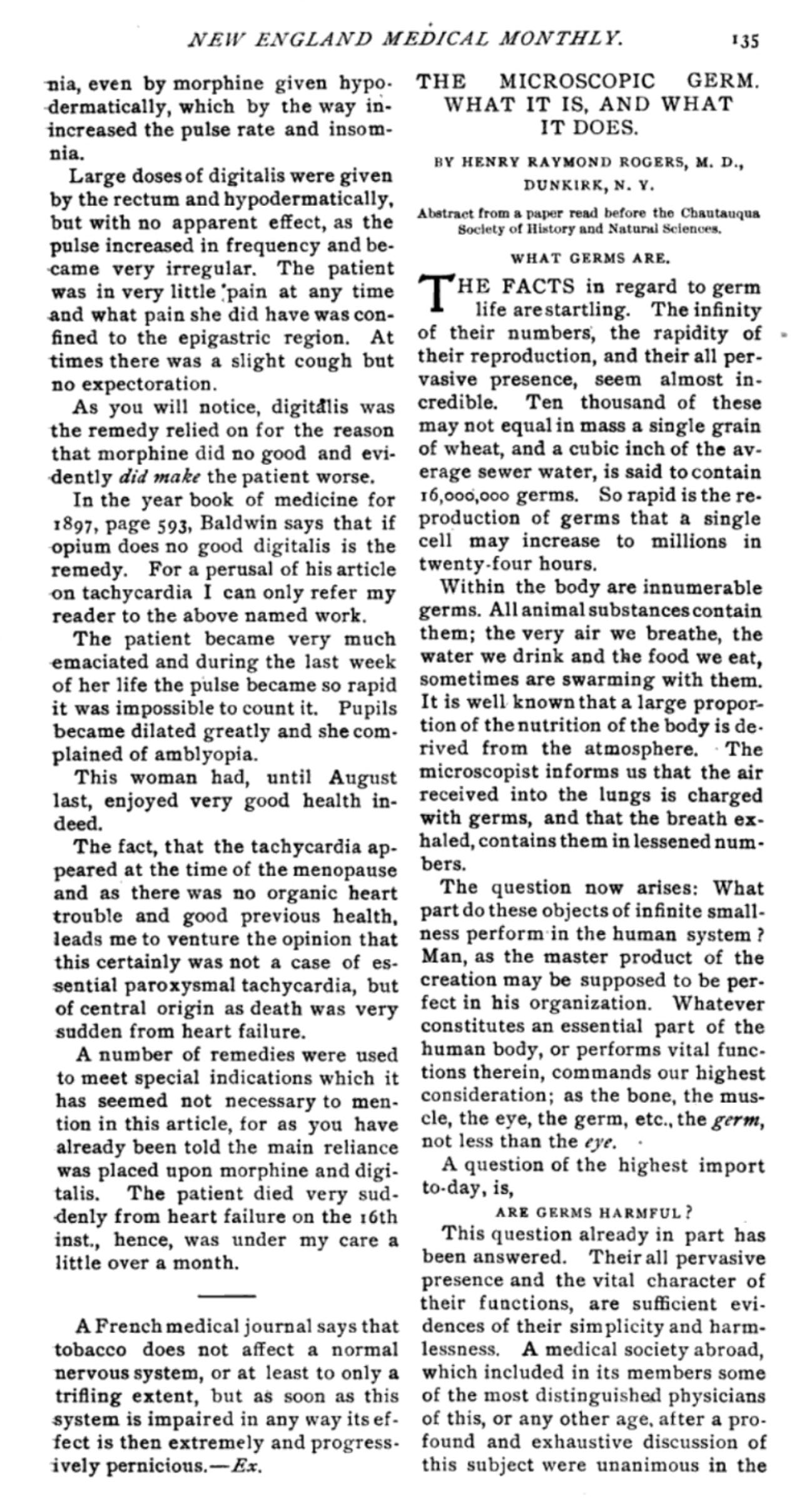
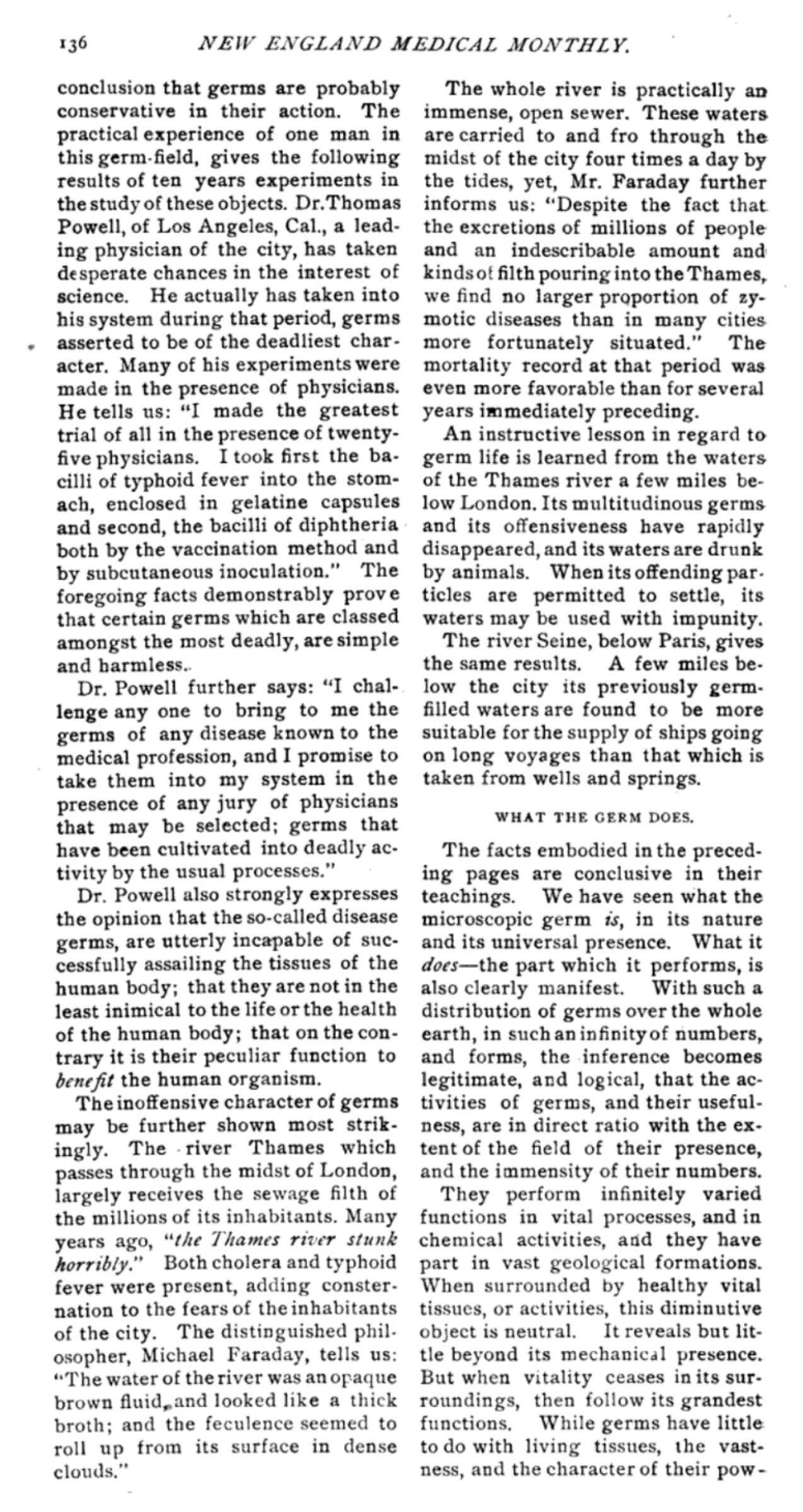
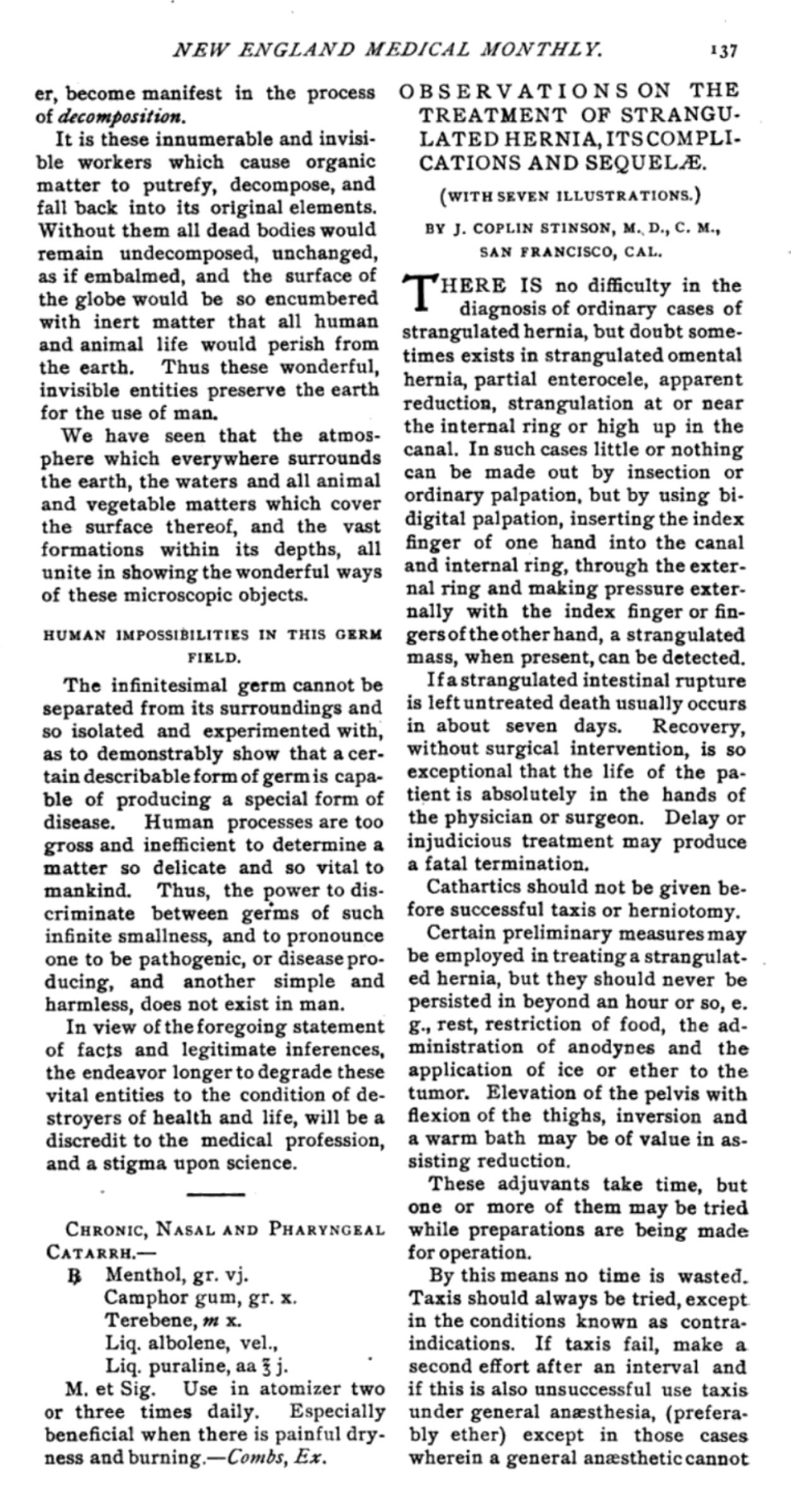
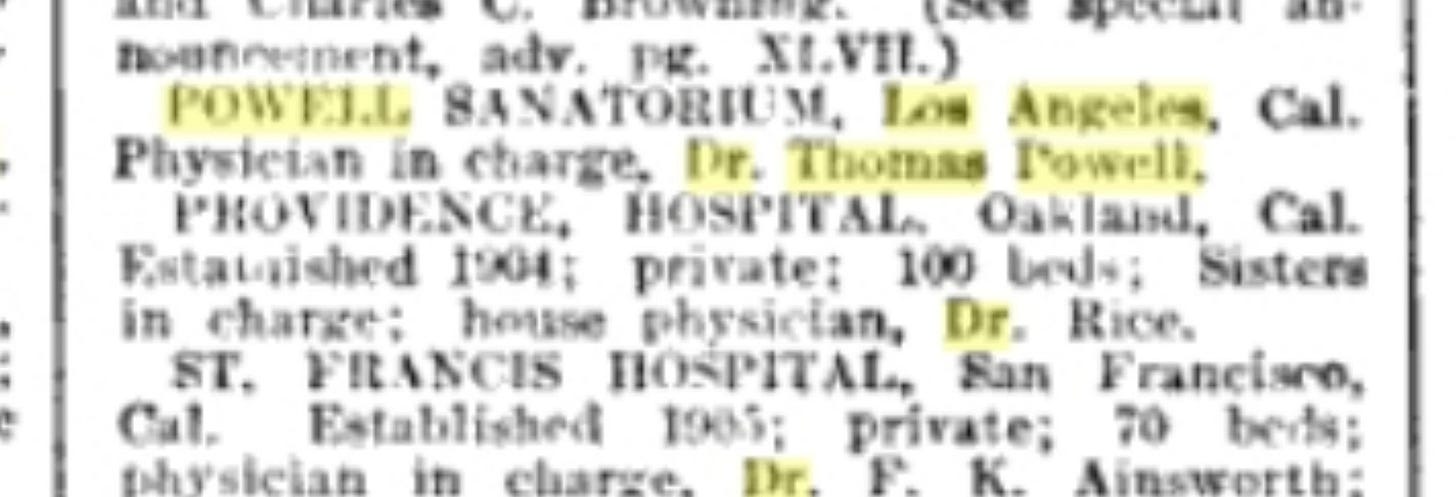

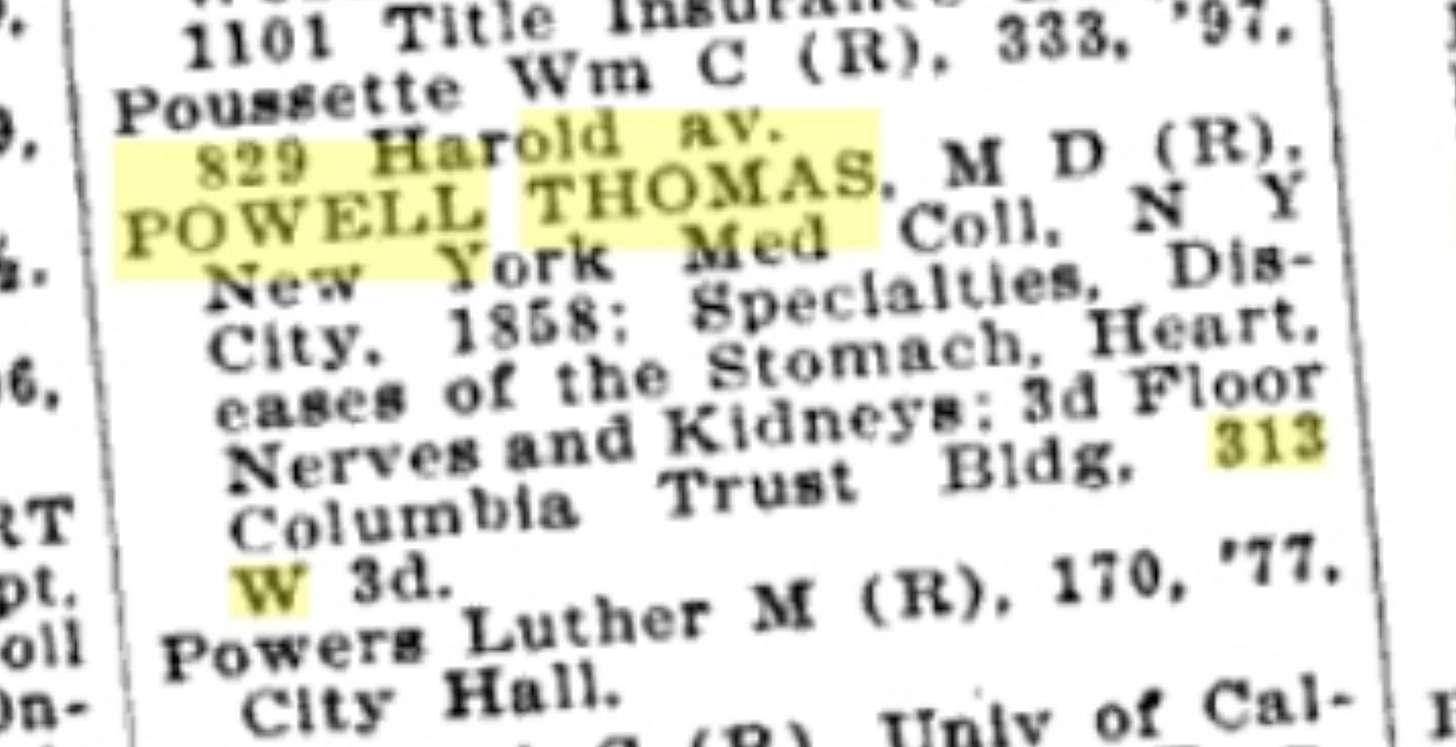
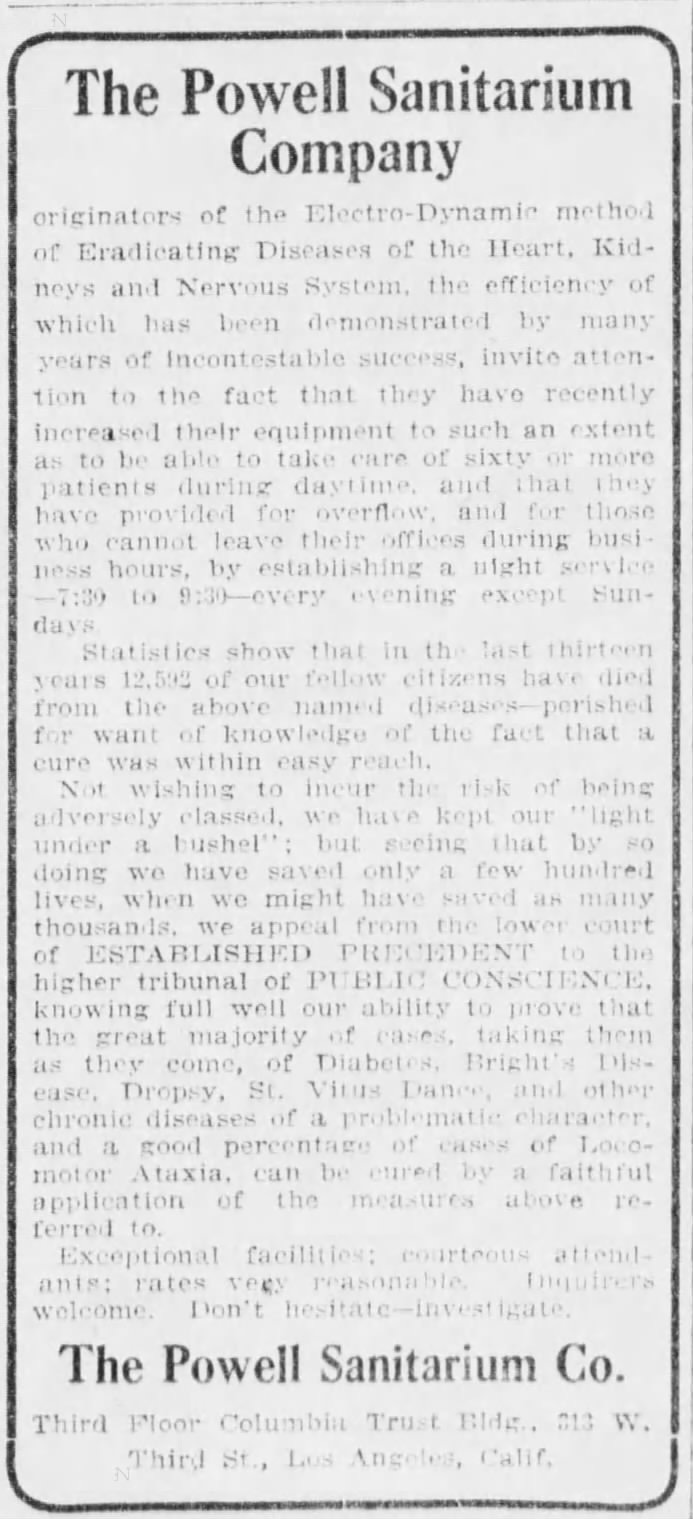


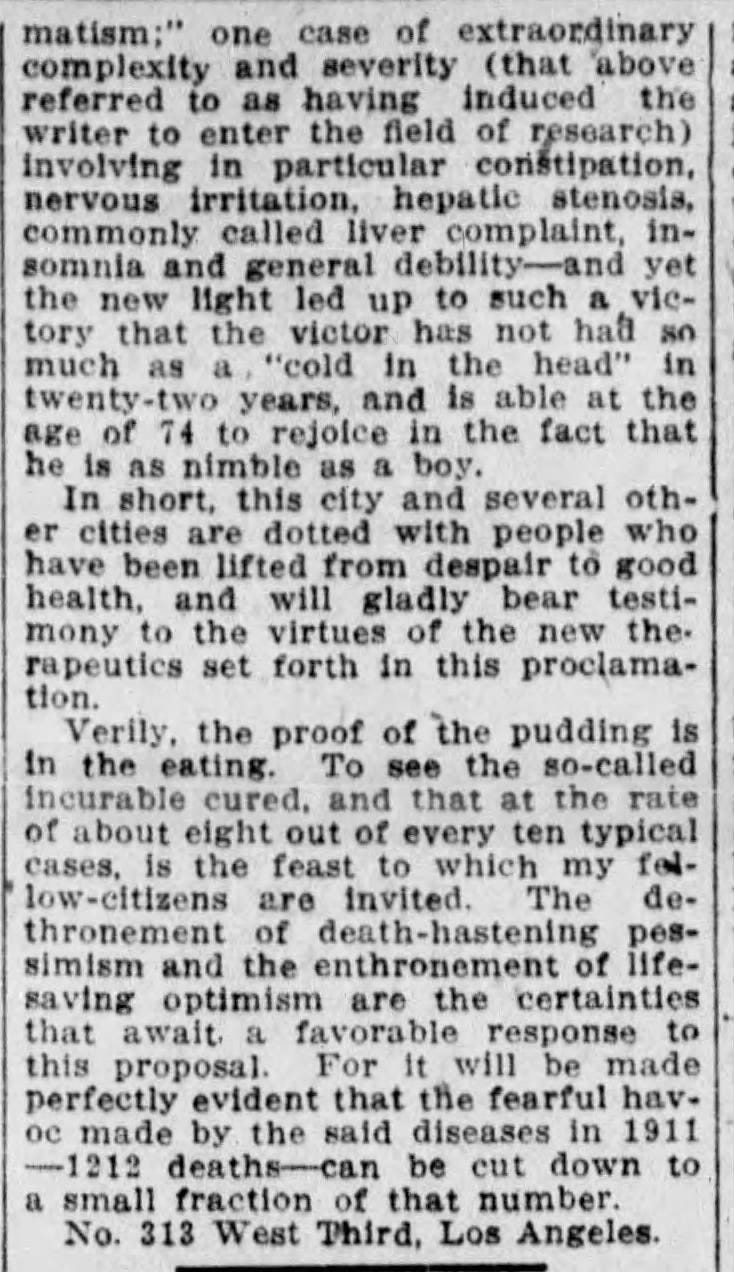
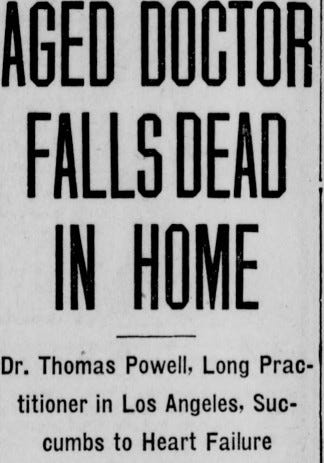


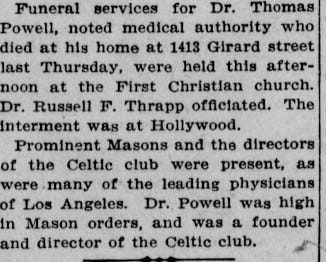

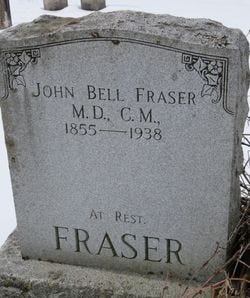

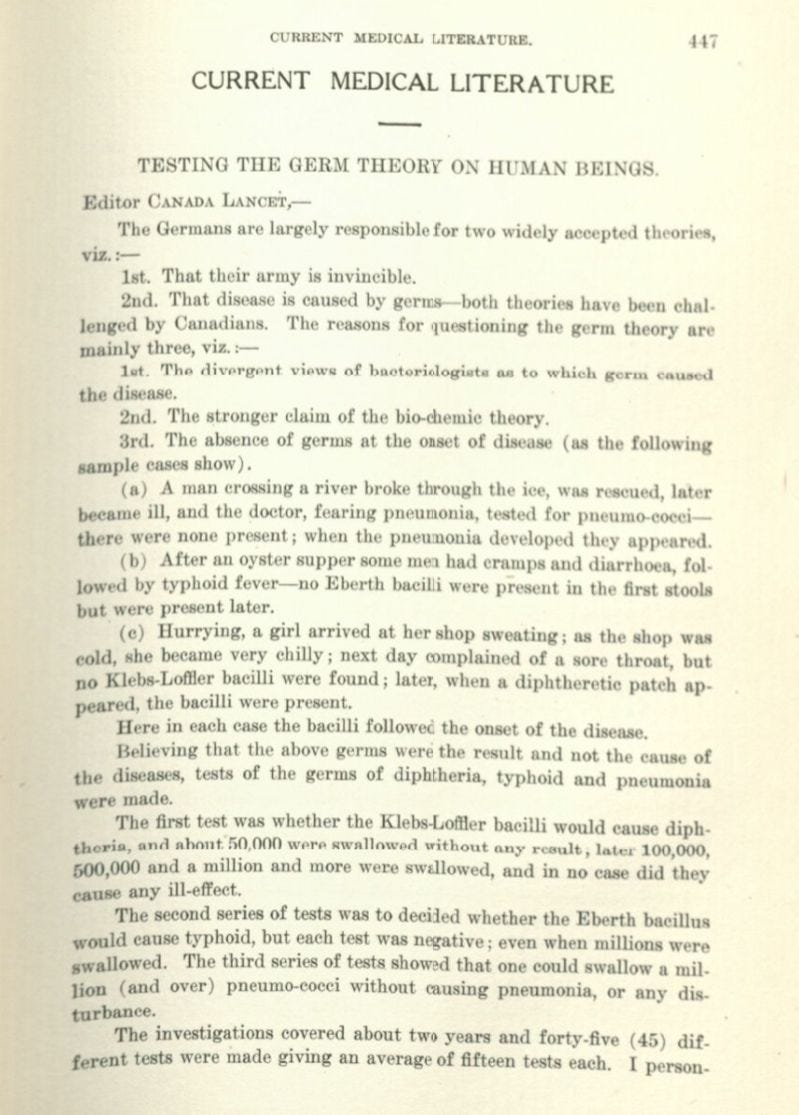
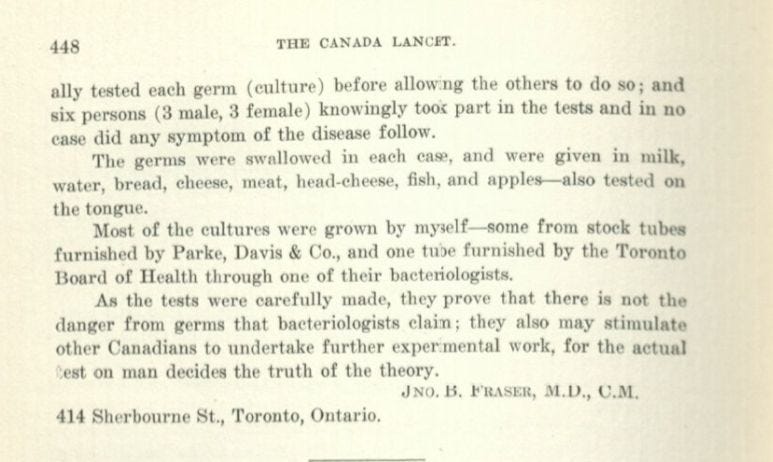




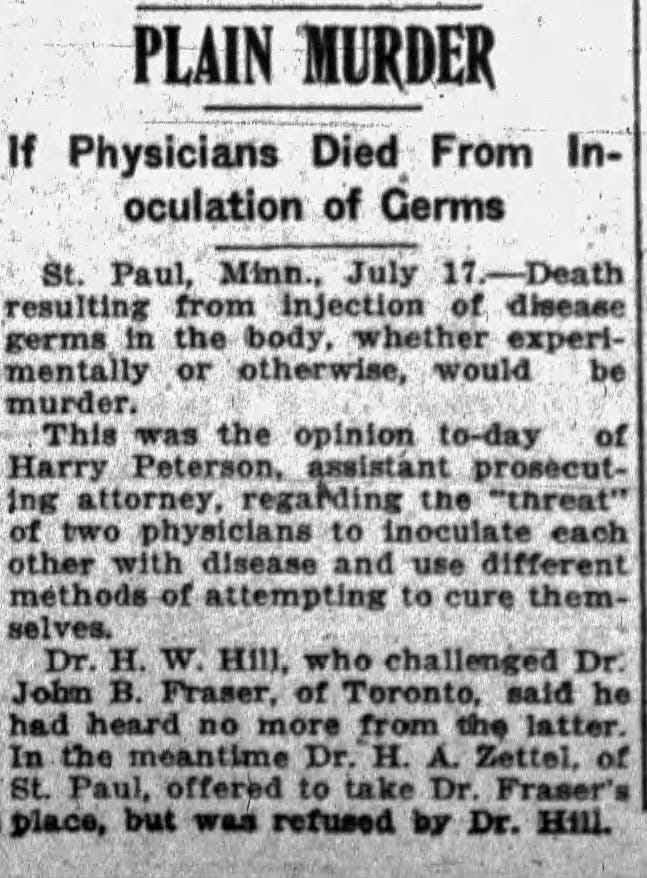
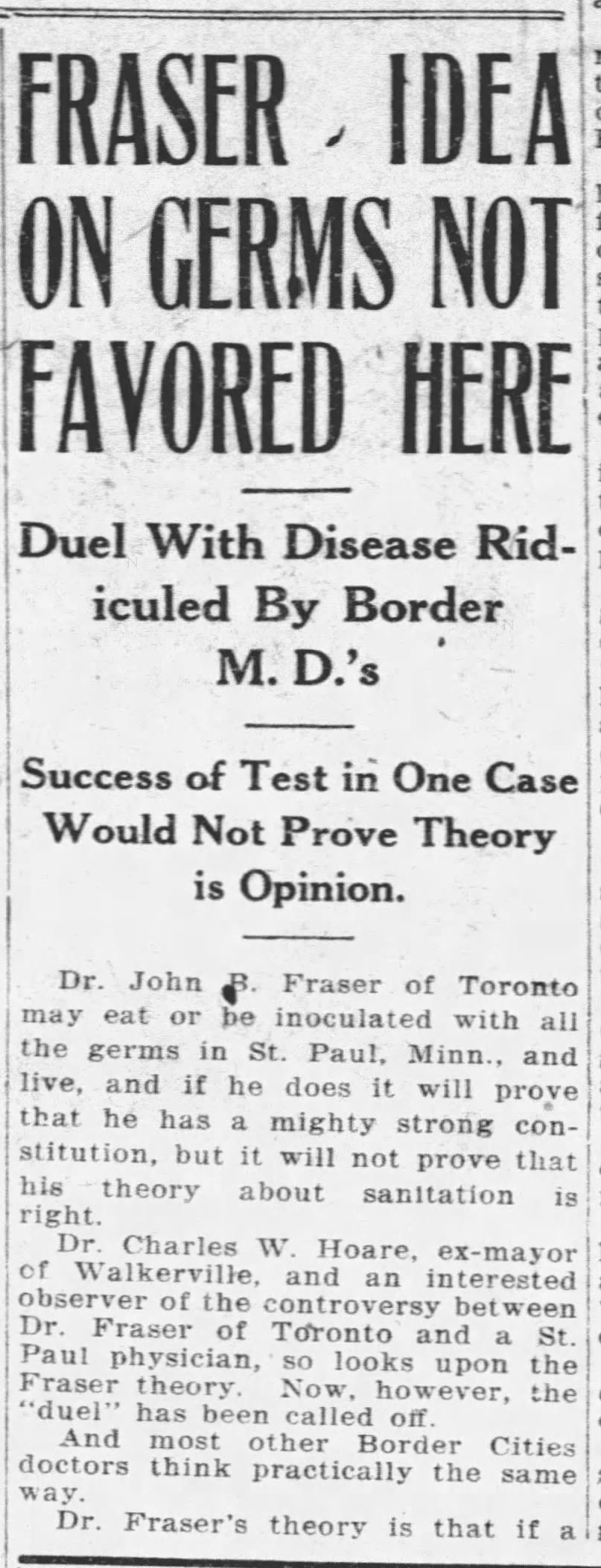



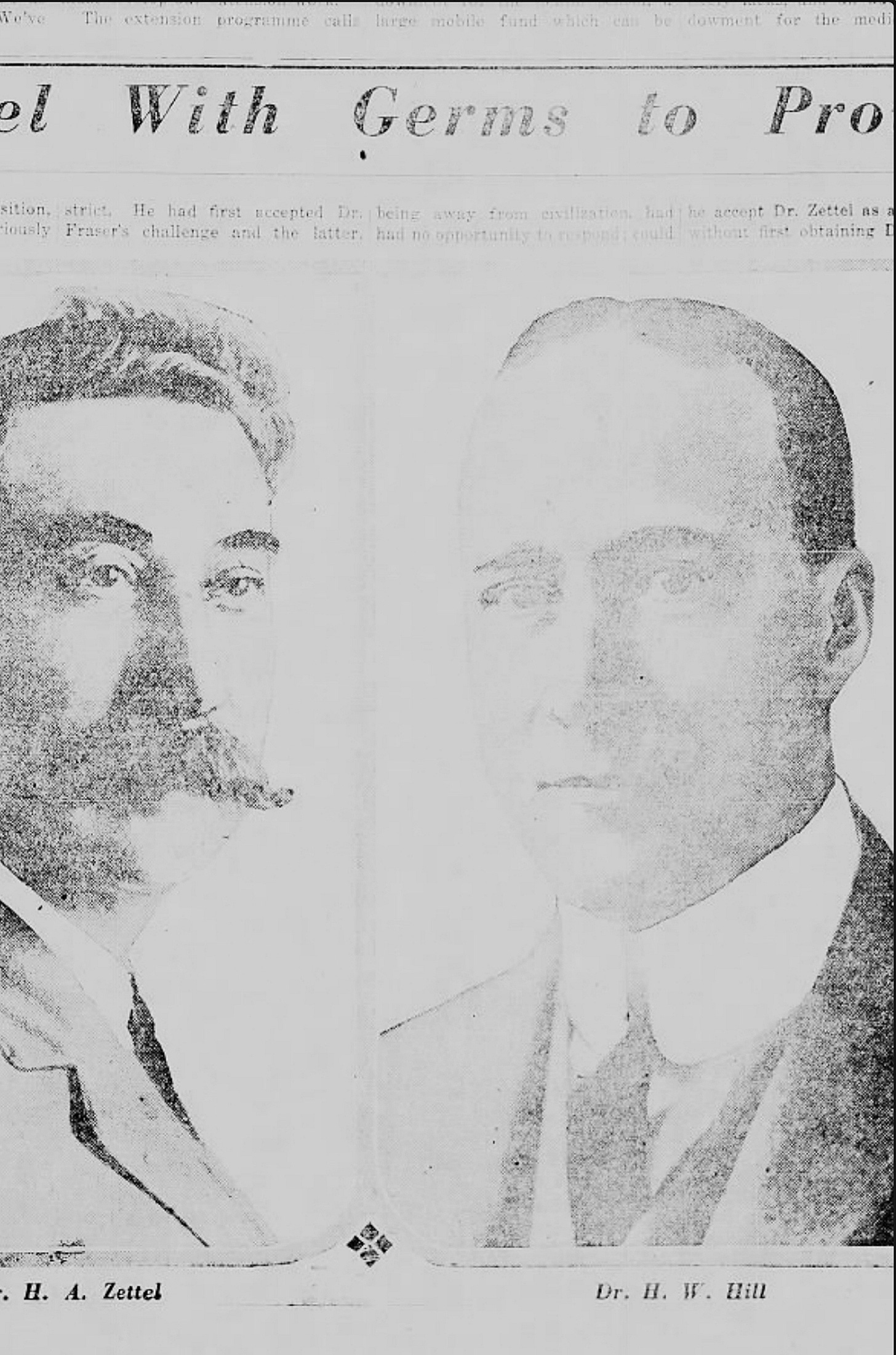
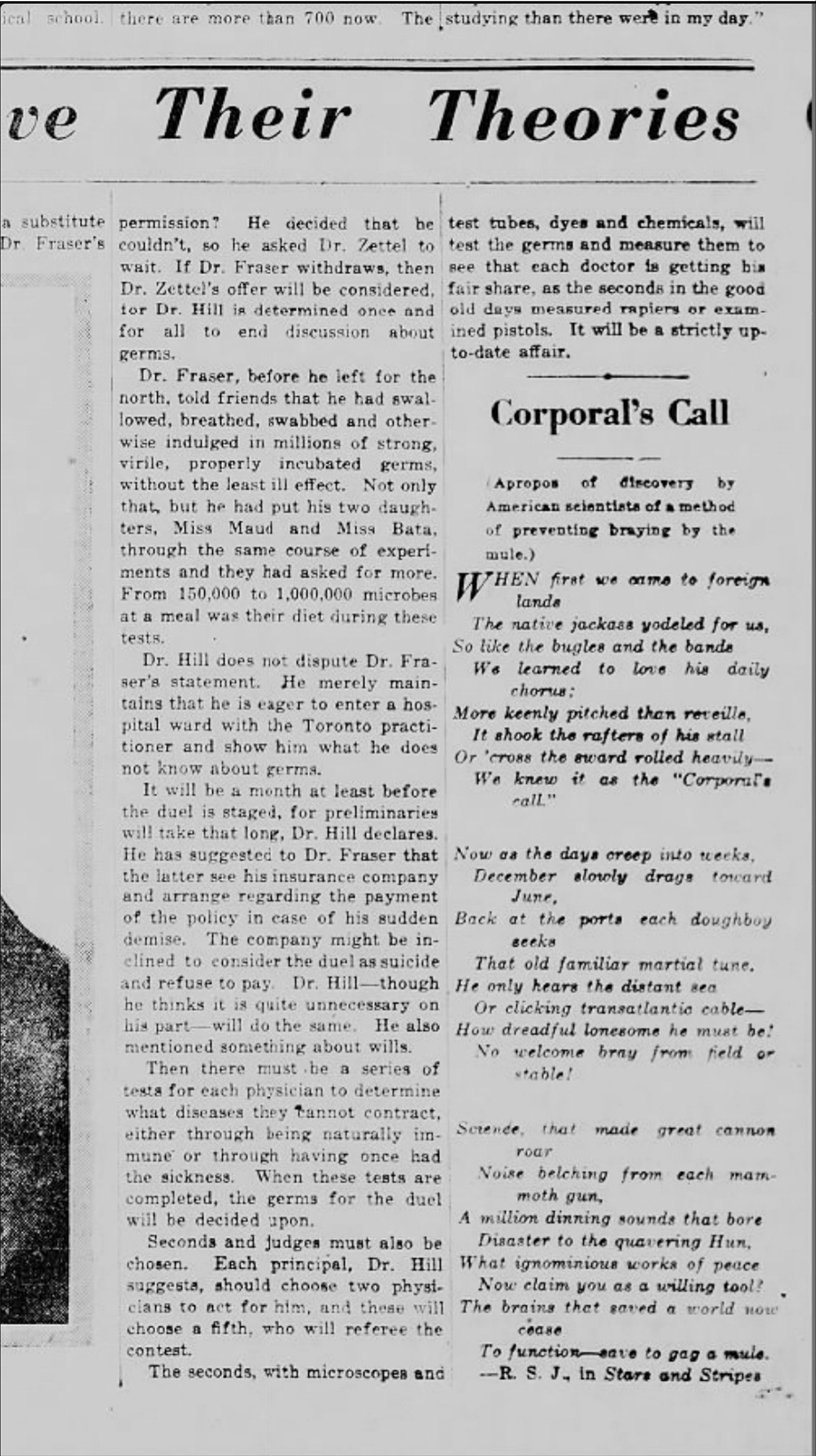
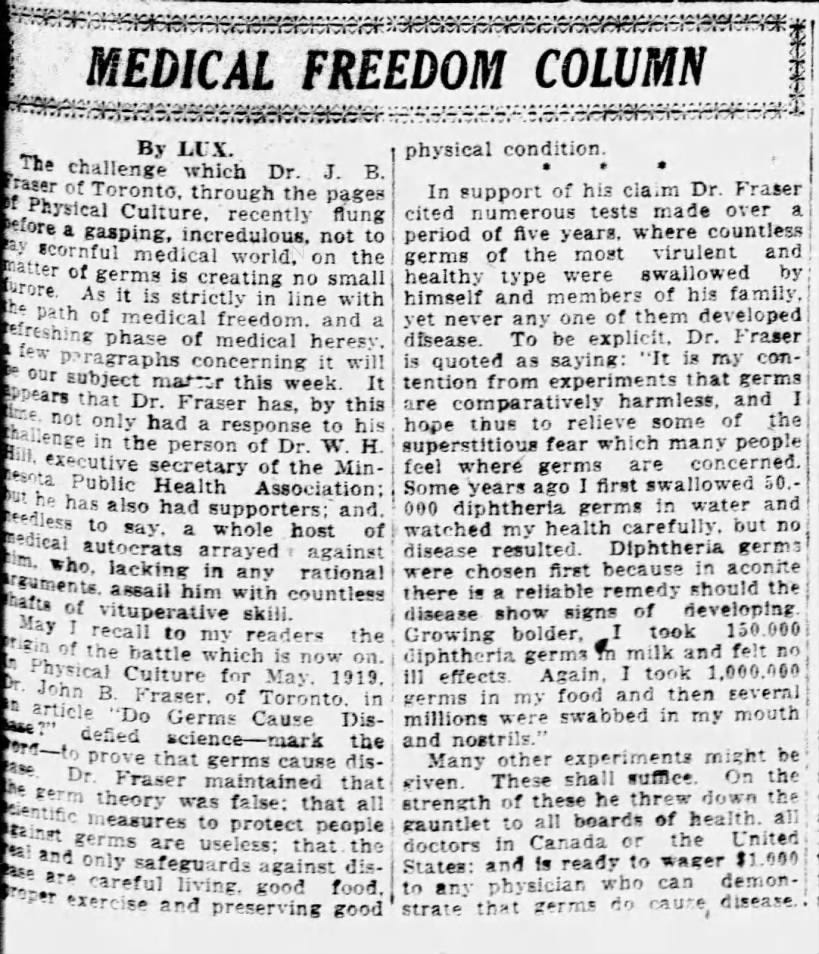

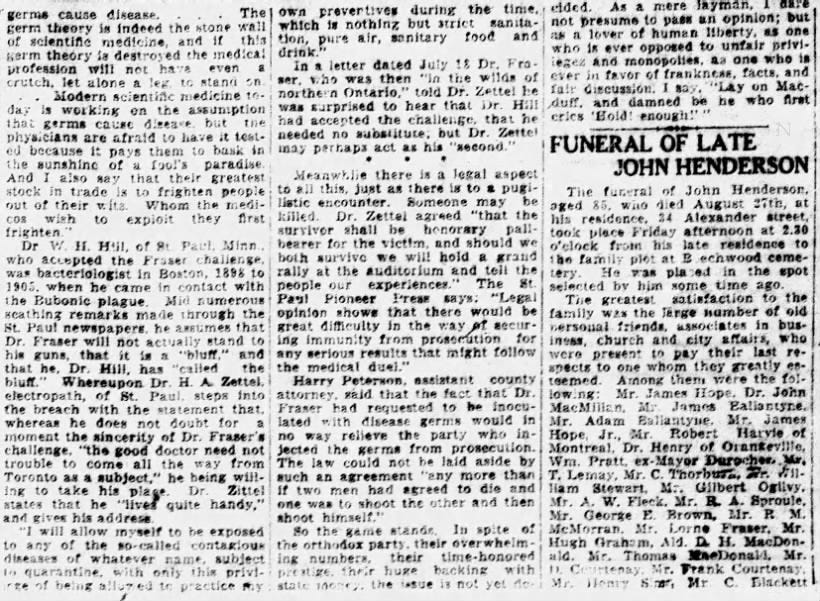


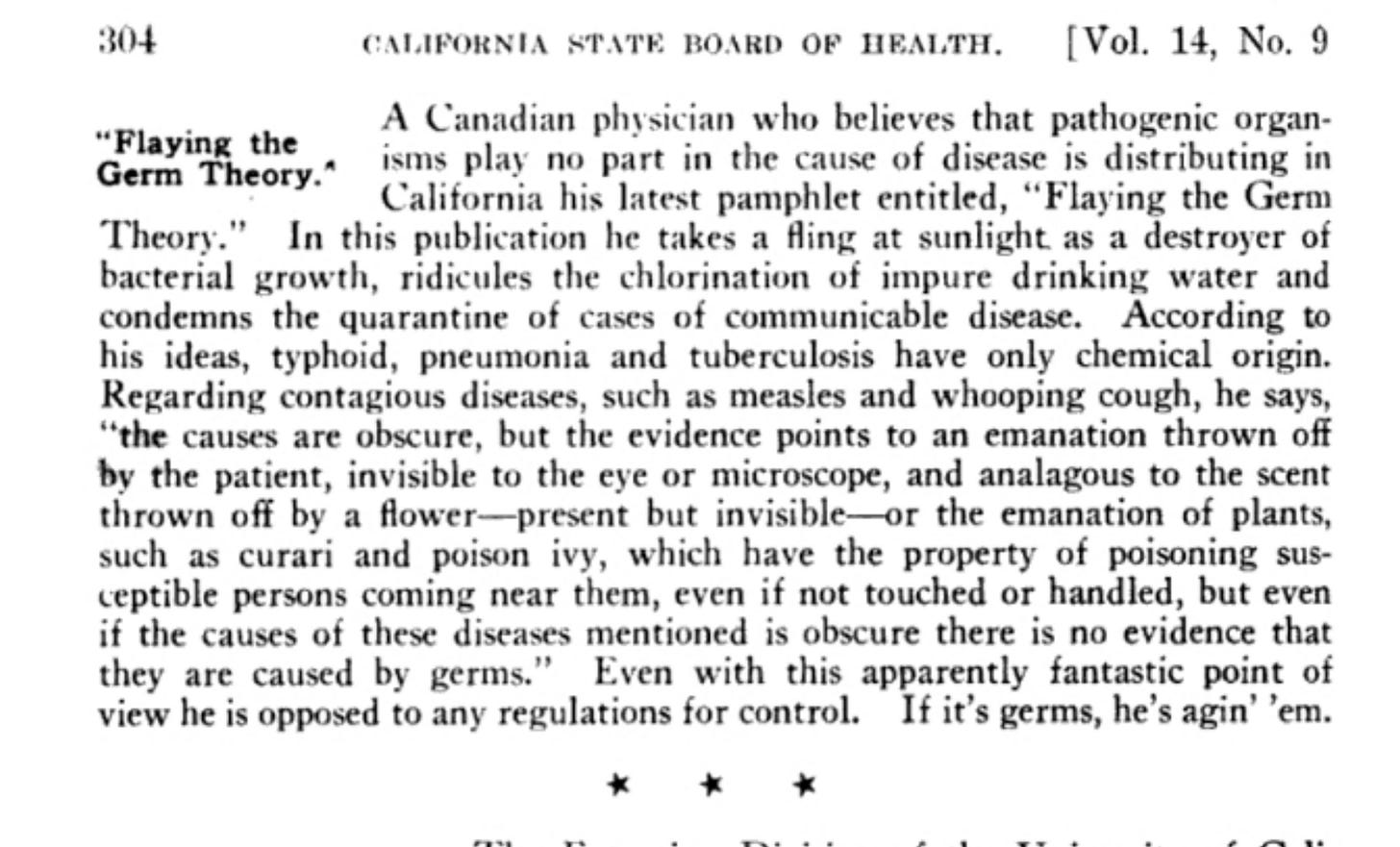
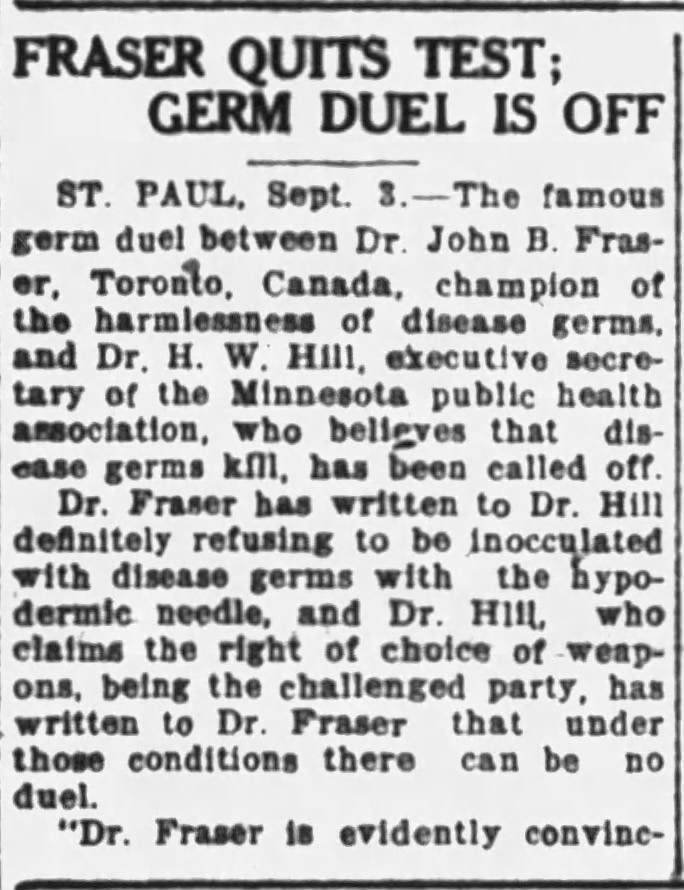

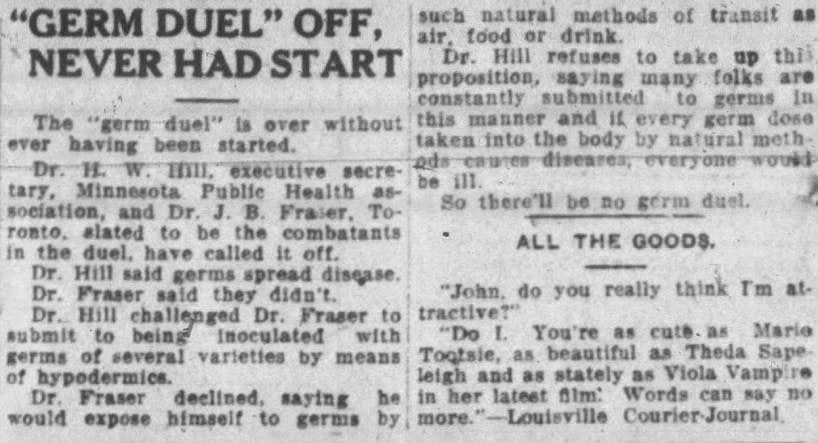
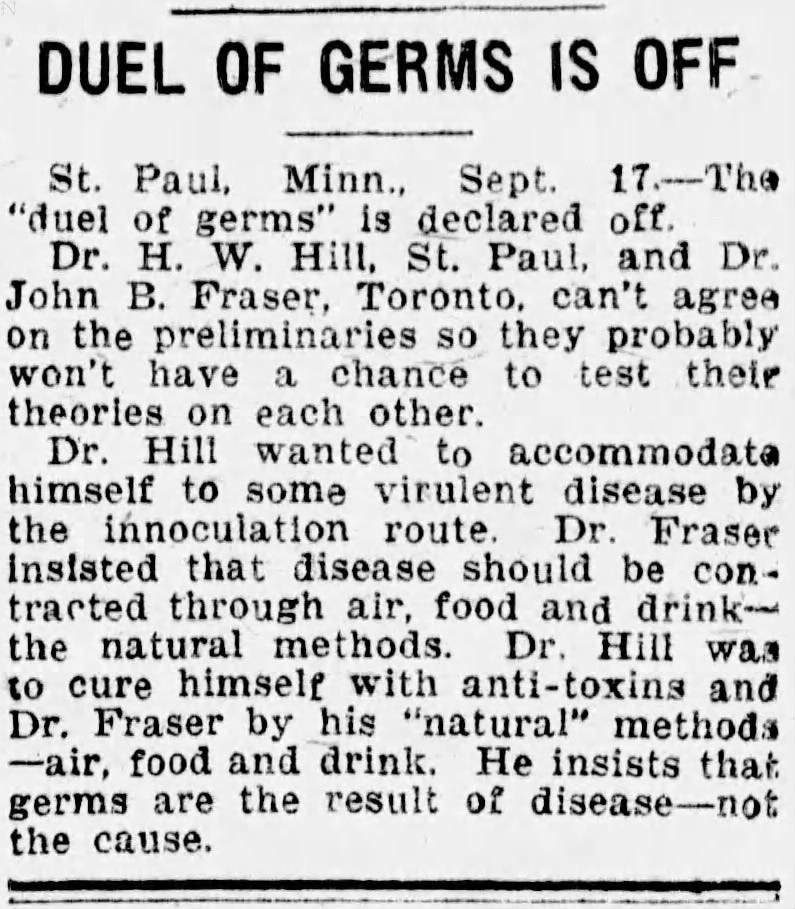
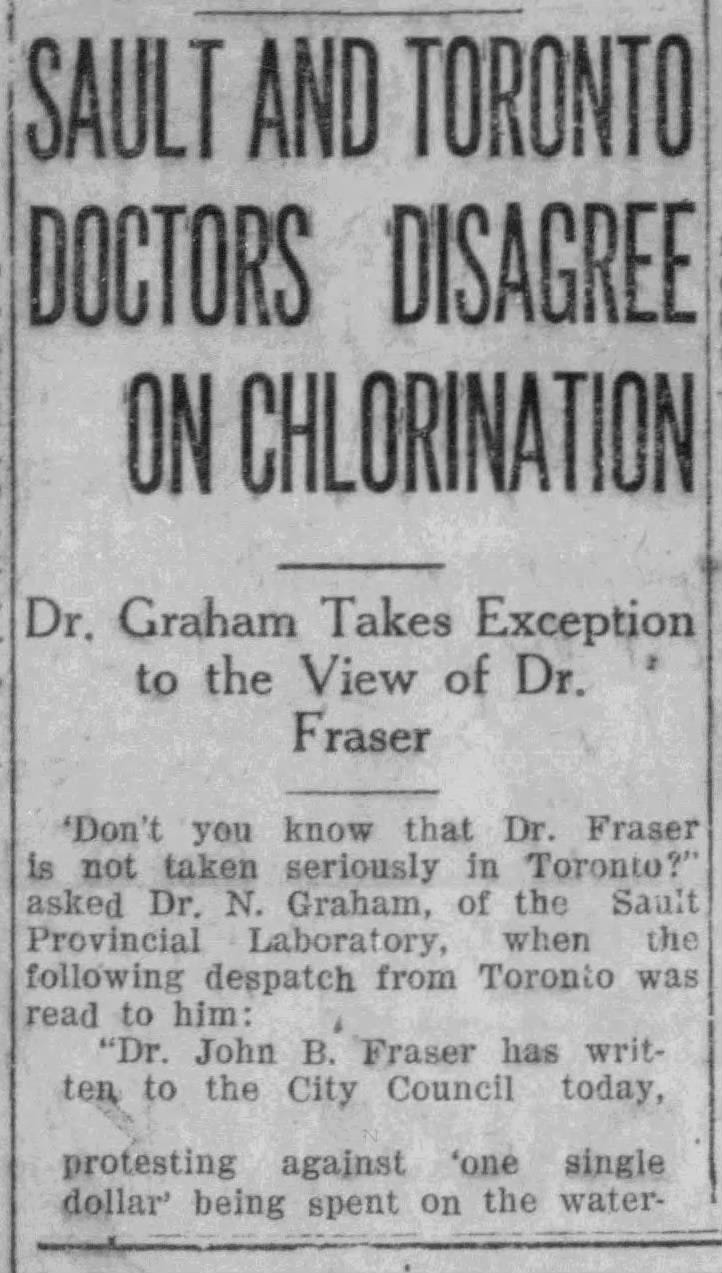
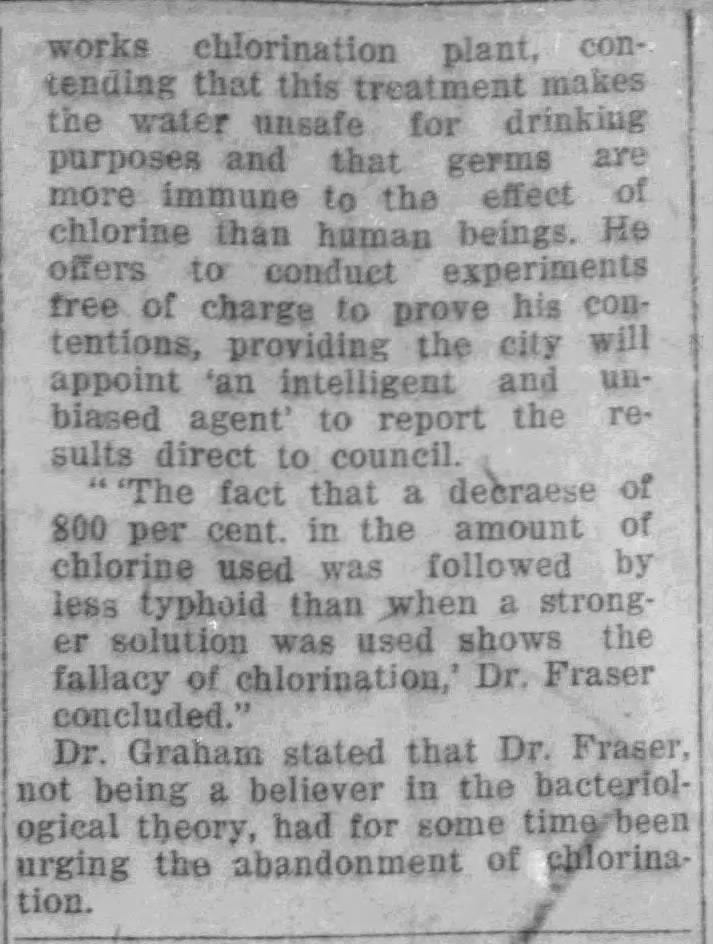
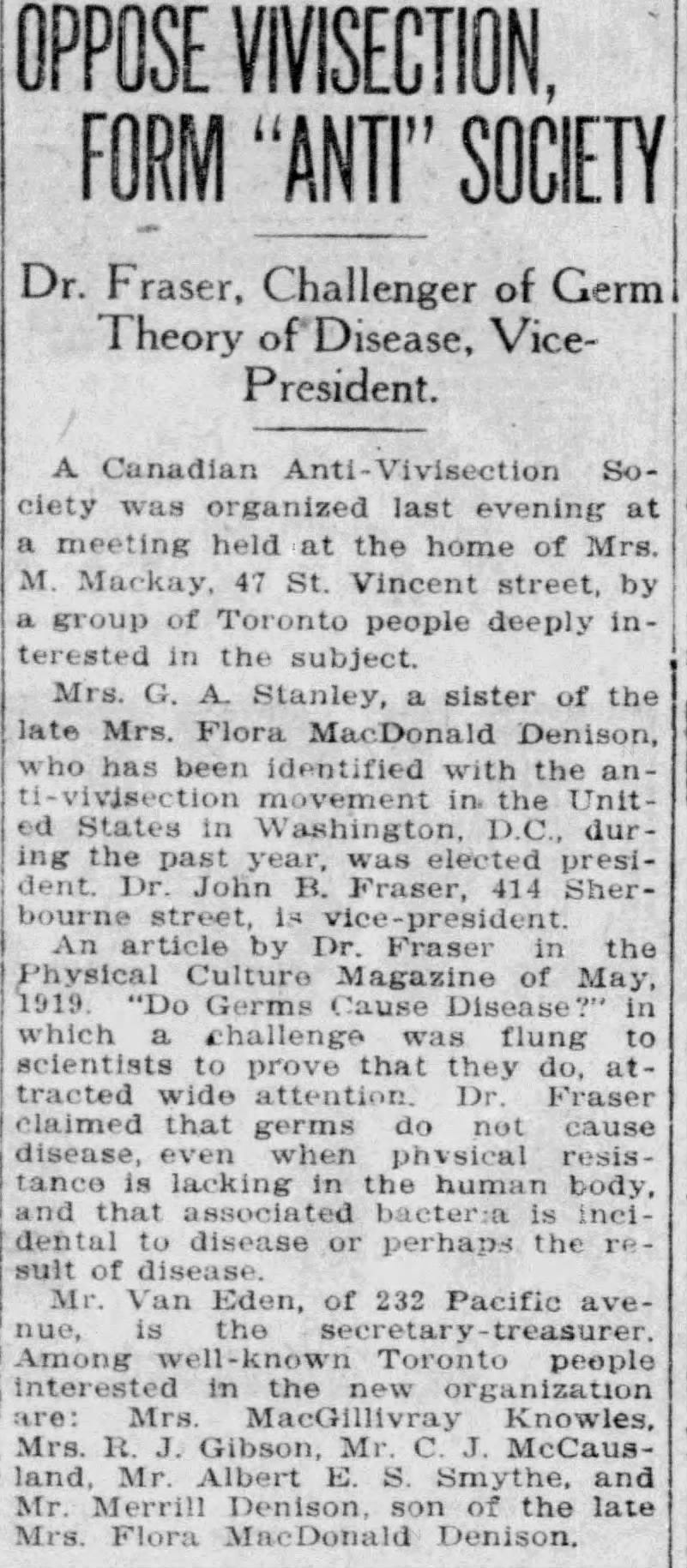

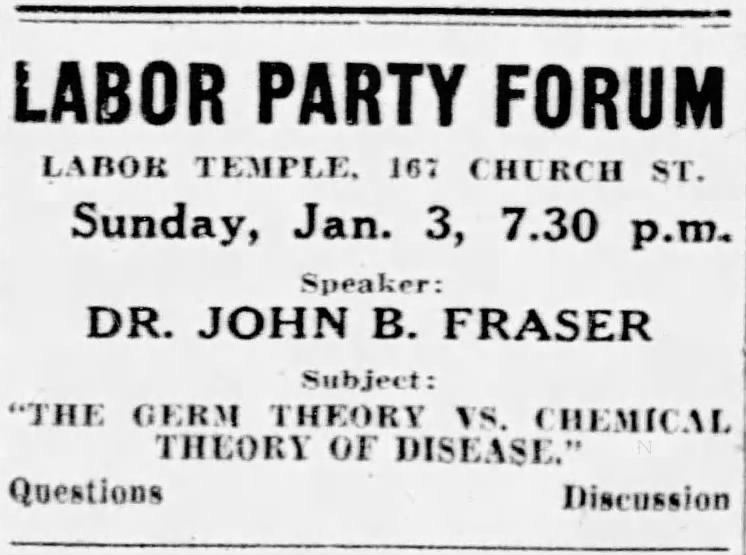
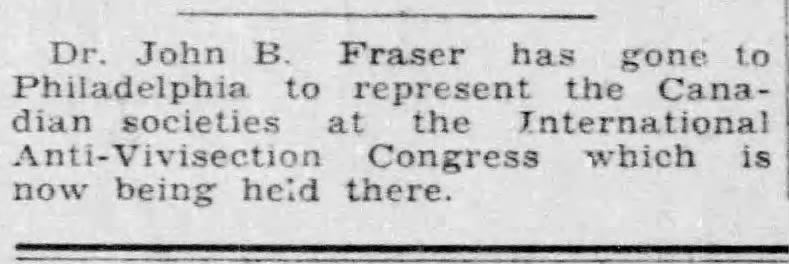
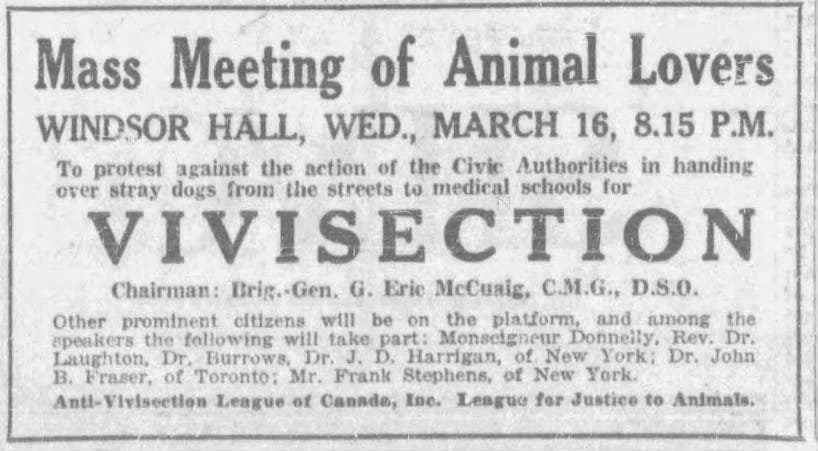
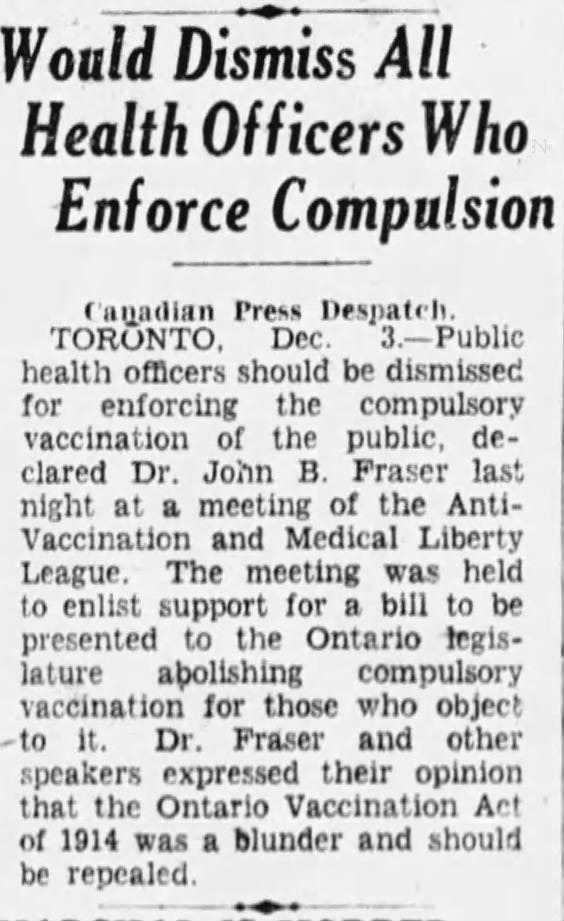
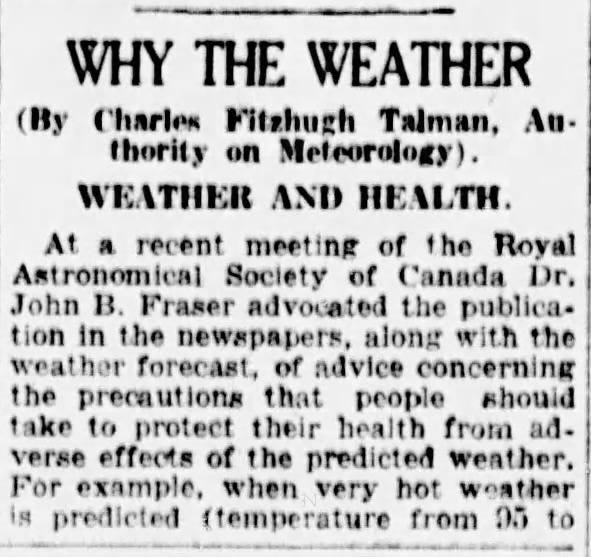
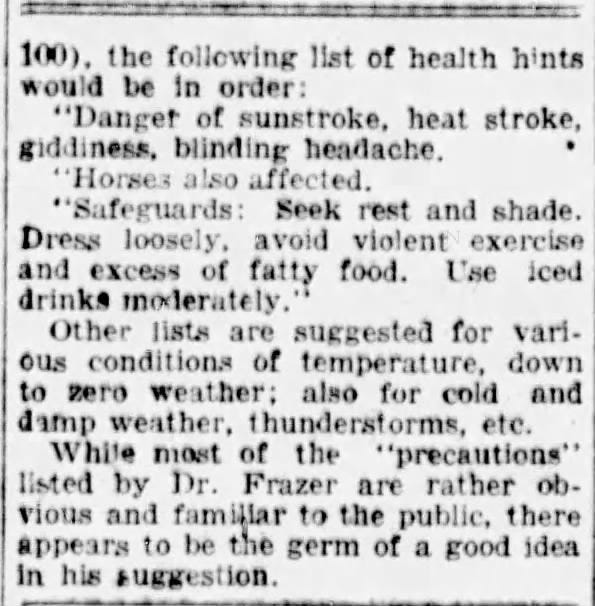
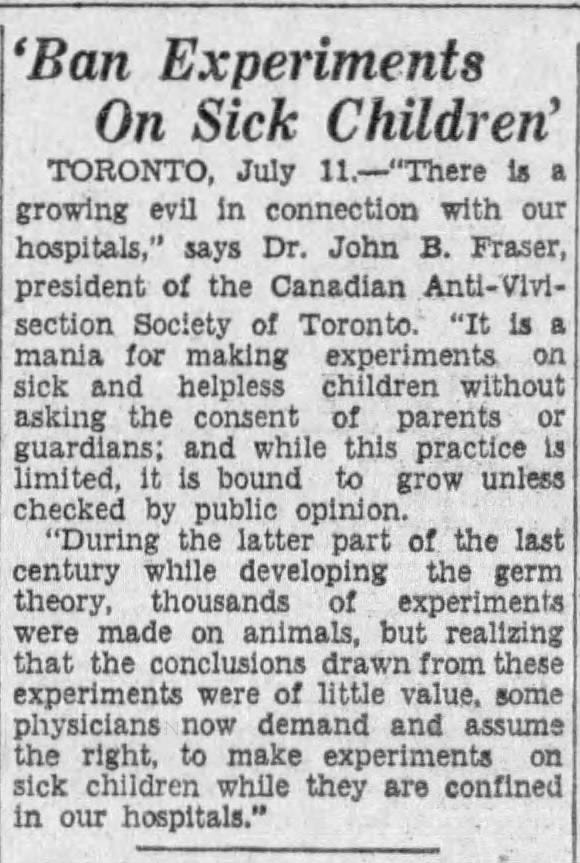
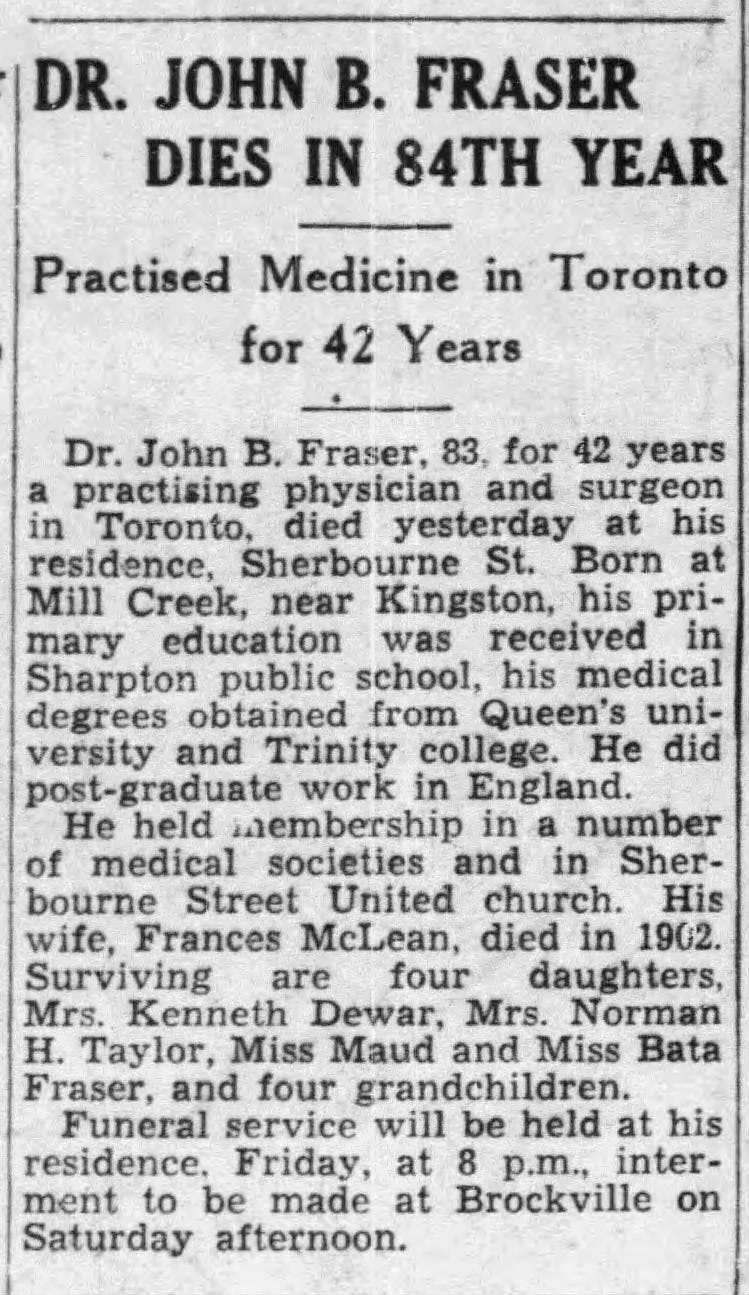
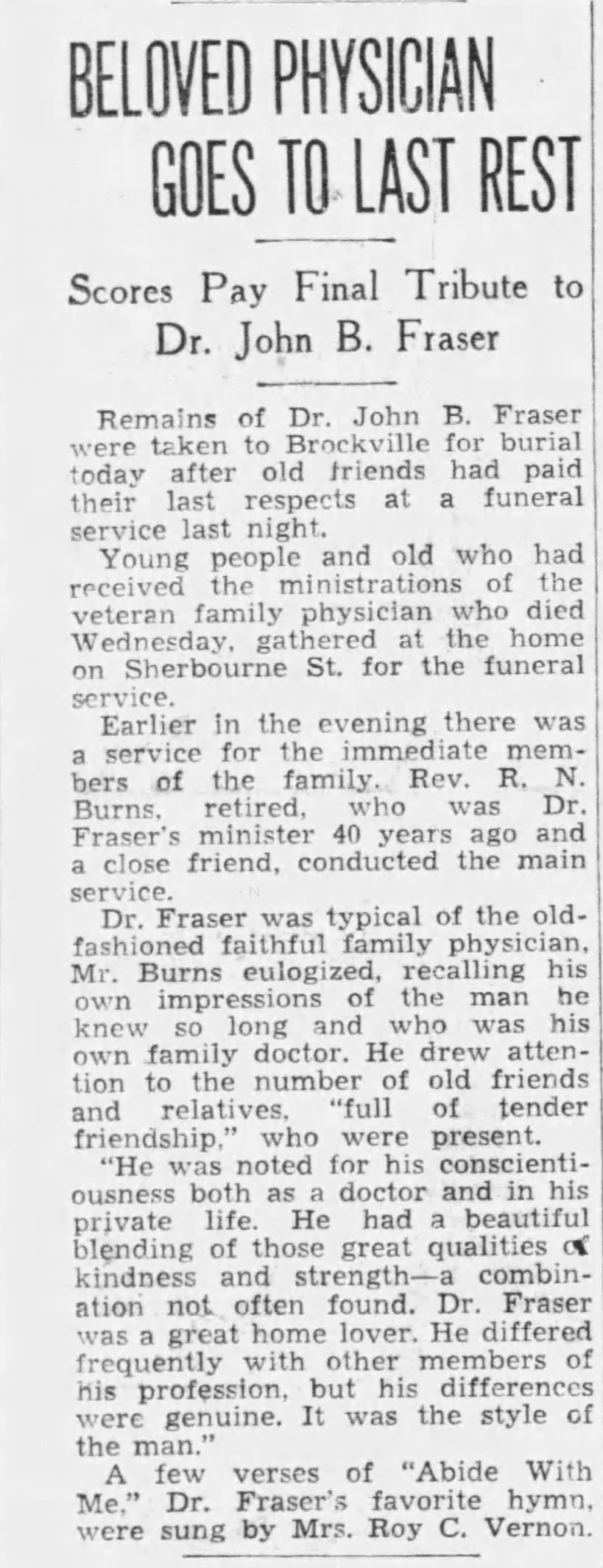
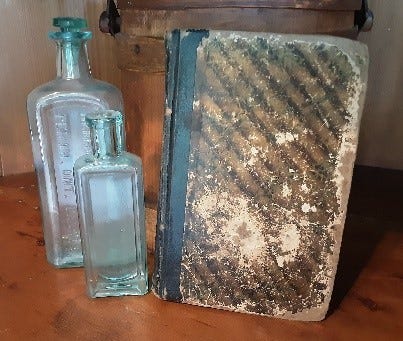




Amazing work as always Mike, showcasing these amazing men. Incredible!
Why is it that Mike Stone never ever writes an average, so-so article? Why are they all brilliant, expertly written, ground breaking, expertly researched and almost magical to read? I am getting suspicious. 😎😂🤯🥰